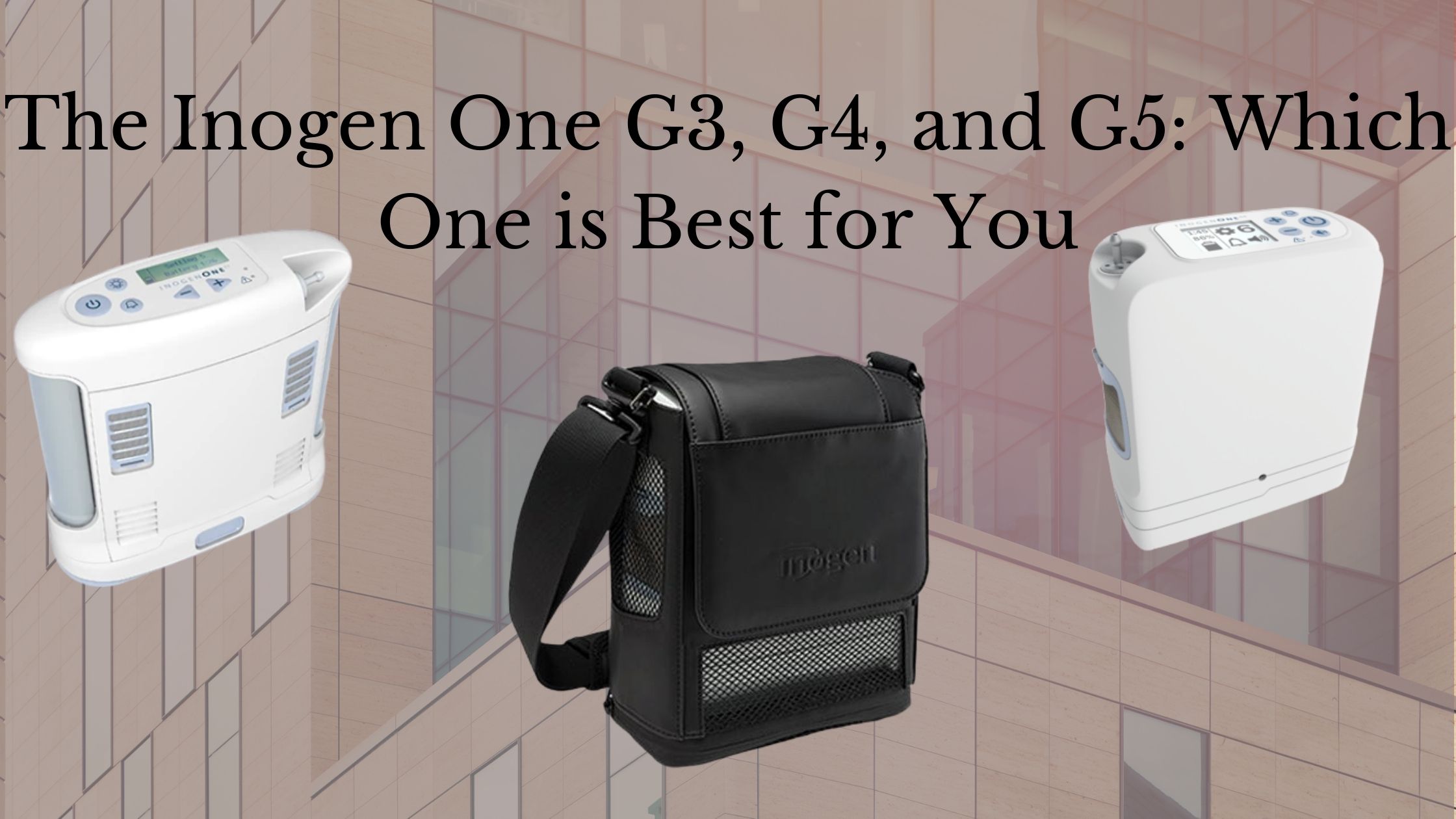
As an oxygen patient, quality, affordability, and reliability should be the characteristics of your oxygen equipment. As a longtime family owned medical equipment company in Denver, CO, and a newer oxygen supply company in Boca Raton, Fl we are always searching for the best manufactures to work with in order to provide our customers with oxygen equipment that exceeds their expectations and doesn't break the bank.
Inogen oxygen equipment offers users the quality and reliability they need to depend on their oxygen equipment all day and all night, and when purchased from LPT Medical you can expect affordability that is hard to find anywhere else.
In this article we are looking at three generations of Inogen oxygen devices, the One G3, G4, and G5. All of these devices offer the quality and reliability that you need to feel confident and covered at all times.
Quality Oxygen Equipment
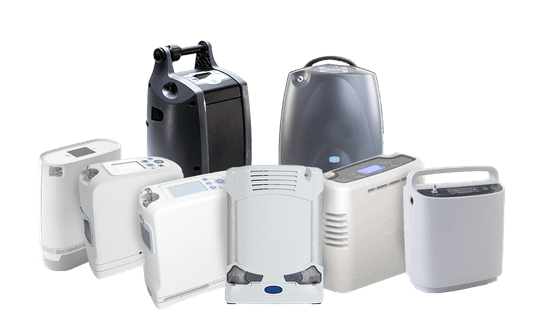
Quality is always an important factor to take into consideration when buying an oxygen concentrator. Fortunately, LPT Medical offers products from the most reputable manufacturers in the industry including but not limited to Inogen, Philips Respironics, Drive Medical, and more. These are the companies that are pushing the boundaries of what’s possible for patients suffering with a debilitating respiratory condition. And by offering these brands, we ensure that more people around the country have access to the most state-of-the-art oxygen therapy equipment in the world.
Reliable Oxygen Equipment
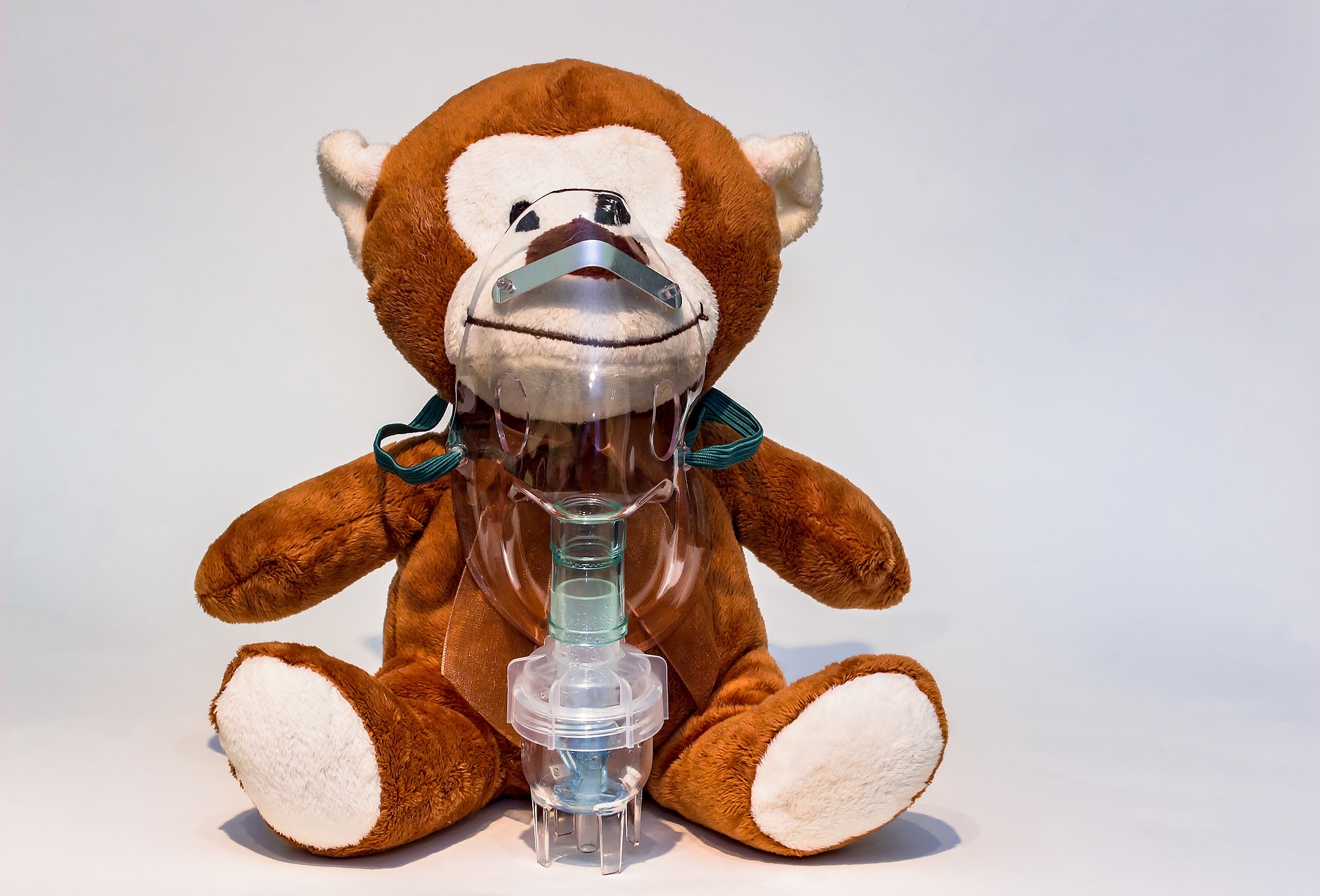
Reliability is something that we can all agree we look for in just about any purchase, especially the more expensive and life changing expenses, like a car or of course your oxygen equipment.
Everyone is different, but we know that many oxygen users are still very independent people. With the help of a portable oxygen concentrator, oxygen users are able to rely on themselves rather than being at the will of an oxygen delivery service. Therefore, it is so important to us to provide our customers with reliable equipment that will get them through the tough days, bad weather, and even global pandemics.
Affordable Oxygen Equipment
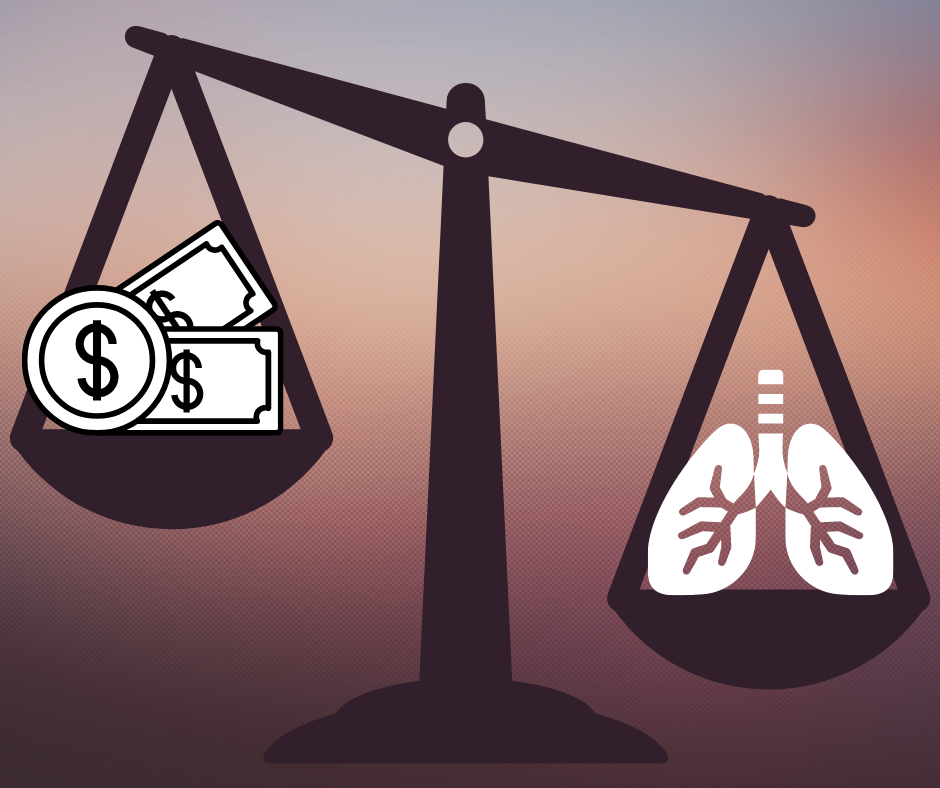
So how do we offer the lowest prices on portable oxygen concentrators and all of the oxygen accessories that you need to make the most out of your supplemental oxygen therapy?
We are a small business, and so we can focus on the small things. We can also relate to a lot of our customers, so we understand their frustrations and connect with them on a personal level which makes doing business a lot more enjoyable for both parties.
Every year it becomes increasingly more difficult for people to pay for the medical equipment they need in order to treat conditions like COPD, asthma, and sleep apnea. Although many people depend on oxygen equipment to be able to live fulfilling and satisfying lives, trying to get Medicare and private healthcare companies to see them as a necessity is like pulling teeth. Oftentimes, healthcare providers refuse to pay their fair share and respiratory patients are left high and dry without many options.
To counteract this, our goal here at LPT Medical is to get an oxygen concentrator in the hands of anyone and everyone who wants one. We’re proud to offer the lowest prices on portable oxygen concentrators you can find online, alongside financing options that make monthly payments more manageable for the average buyer. We have a wide price range of products for sale and we always have second hand machines for you to consider.
Inogen Portable Oxygen Concentrators
.png)
Inogen is one of the leading oxygen manufacturing companies in the world, and for good reason. Their devices are powerful, lightweight, and innovative. Each generation is better than the next in some ways, but the older generation never lose their value because of how well they are built and how user friendly they are.
Some of the older generations like the G3, work even better for some patients depending on their needs and lifestyle.
This is why we created this blog, for you to see the comparisons between different Inogen devices all in one place.
Inogen One G3
The One G3 was created before the G4 and G5, but it is still one of the most popular devices on the market today. It is lightweight and powerful enough to fulfill most pulse dose oxygen patient’s needs.
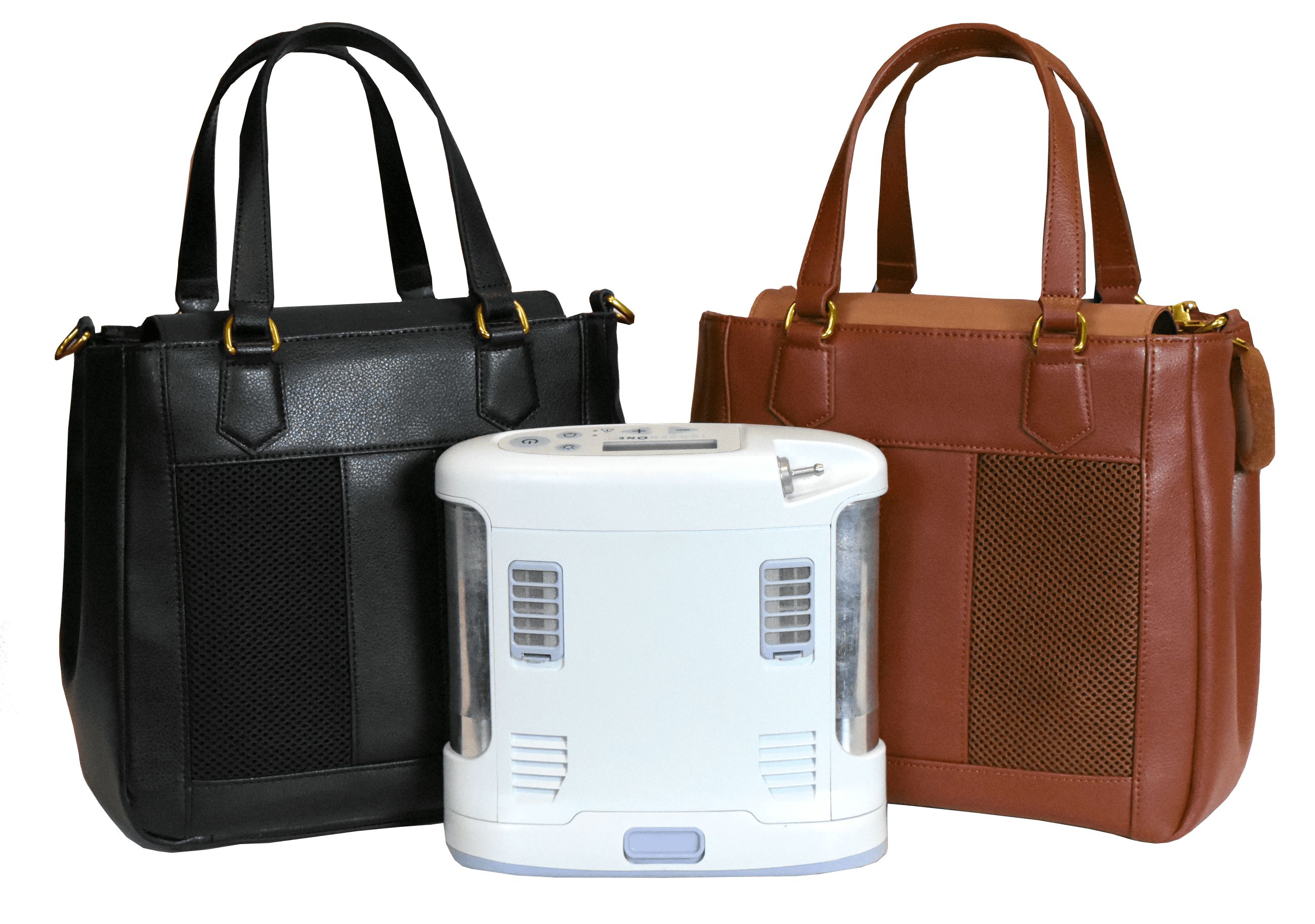
Small, Lightweight, and Durable Design
When you are looking for the best portable oxygen concentrator, you want something that is lightweight. This is important for obvious reasons, you can carry your device with you with no hassle. With a small device, you can easily place it in your purse or backpack for transport, or use one of the One G3 custom carrying cases. Having a small lightweight device will allow you to maneuver around your home efficiently, you will feel less cumbersome, and your oxygen device will actually help you move around rather than hold you back.
The One G3 only weighs 4.8 pounds with the single battery, and merely 5 pounds if you decide to use the double battery, (we will discuss battery life in the next section).
The small device stands at just 7.25” W x 3” D x 8.75” H, but this compact device is also powerful, and gives off oxygen that can help you get back to healthy oxygen levels. With a small lightweight device you can start to walk and exercise more which will also improve your endurance and lung health.
Battery Life That Will Last
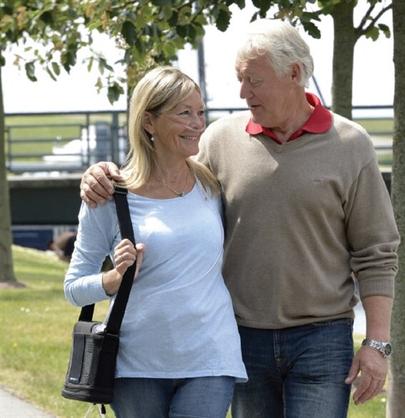
The battery life of the One G3 is amazing compared to other POCs. Having a portable oxygen concentrator with long lasting battery life gives you the freedom you deserve. Because the device takes in ambient air from its surroundings, it will never run out of oxygen, all you must do is keep your battery charged, as you would your cell phone!
Is it no secret that oxygen delivery companies will keep you waiting around for hours on delivery days, and sometimes they don’t even provide you with the correct equipment.
Having an oxygen device that is battery power gives you the responsibility, and in turn, the independence to take care of your oxygen needs without relying or waiting on anyone else.
With the Inogen One G3, you have 2 different battery options to choose from:
- 8-Cell Battery
- 16-Cell Battery

The One G3 8-Cell battery keeps your Inogen One G3 at 4.8 pounds and supplies you with up to 4 hours of battery life. It’s perfect for quick errands, doing things around your house, gardening, or exercising.
The One G3 16-Cell battery adds about a pound of weight to your Inogen One G3, but it supplies you with double the battery life, so you can go about 8 hours with oxygen before you have to recharge or replace the battery with a backup. When you think about it, adding an extra pound of weight to get up to 4.5 additional hours of battery life is a pretty good deal!
The 16-Cell battery is ideal for things like traveling, long trips away from your house, and using as a backup power source in case of a power outage.
Pulse Flow Settings
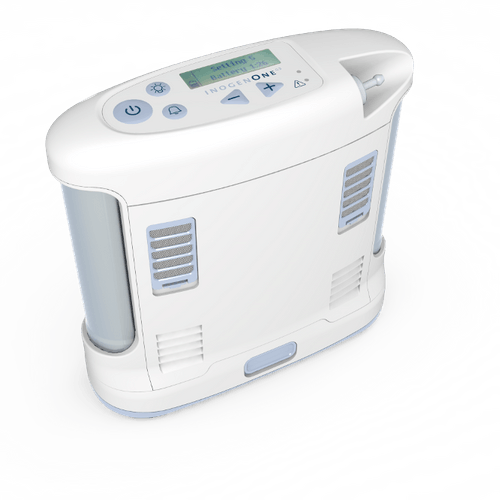
The Inogen One G3 is a pulse flow portable oxygen concentrator. It does not have the ability to provide a continuous flow. It offers pulse flow settings 1-5 and can accommodate nearly any oxygen patient who can use a pulse flow.
Many respiratory diseases that would require supplemental oxygen are progressive in nature. COPD for instance gets worse overtime, and it becomes more severe without the proper treatment and lifestyle changes. So if you require a setting of 2 or 3, the Inogen One G3 provides you with some wiggle room for an increase in your flow rate should your disease progress into a more severe state.
This is so important, because if you and your doctor decide that your flow rate should increase you won’t have to worry about getting a new oxygen concentrator, all you will have to do is simply turn your device up a notch, and be diligent about the difference in the battery life.
Inogen One G4
Whether you’re looking for a portable oxygen concentrator to make your everyday life easier or if you want something that will give you the freedom to travel anywhere you can dream of, the Inogen One G4 should be at the top of your list.

Pulse Flow Settings
The oxygen output of the One G4 is for a select amount of oxygen patients. The pulse flow device can give off 210-630 ML/Min which is a range of settings 1-3. Of course, this device will not work for those who need a higher oxygen output, but if you are within this range, owning the One G4 has some amazing perks, and you should continue reading this section!
Extremely Lightweight
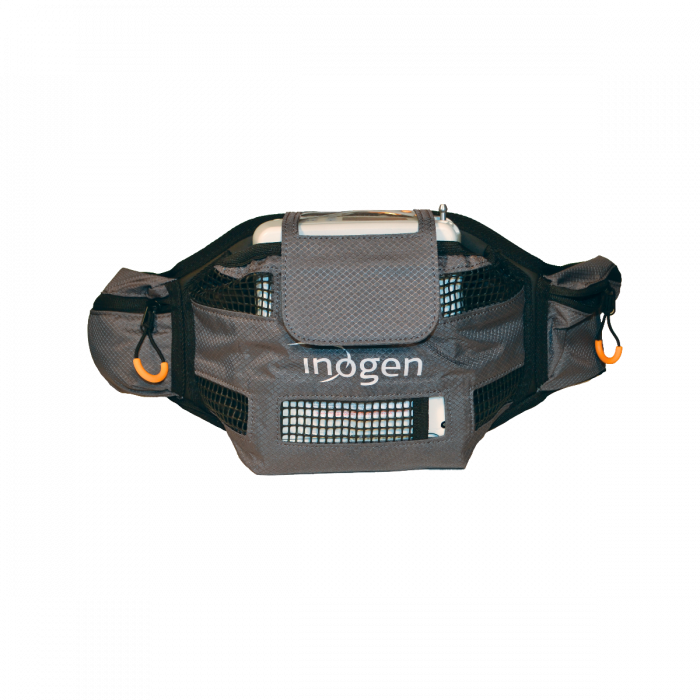
The One G4 weighs 2.8 pounds and stands at 7.2” H x 5.91” L x 2.68” W, the G4 is the smallest and lightest portable oxygen concentrator and its battery life is surprising for how small this machine is.
Because of its small size, the Inogen One G4 is perfect for any occasion. Its compressor is rated to last 20,000 hours so you can have peace of mind using it every day. It’s small enough to carry virtually anywhere without feeling like your arm is going to fall off. And traveling with oxygen has never been easier than it is with the G4.
With the padded shoulder strap, you will be comfortable carrying your Inogen One G4 to the doctors, through the airport, or at the store. And at 2.8 pounds, you will use very little energy to carry your oxygen with you.
Great Battery Life
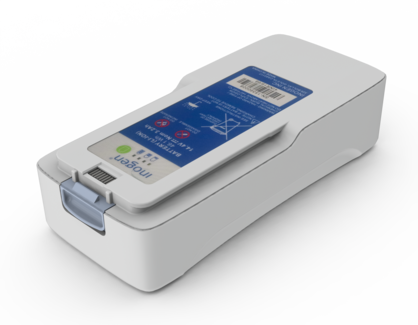
Just like its predecessors, the Inogen One G4 offers 2 different battery options:
- Single Battery
- Double Battery
With the One G4 single battery, you can get up to 2.25 hours of use on a single charge on a setting of 2. This setup is perfect for making trips to the doctor’s office, running to the store, doing things around your house, and exercising.
The One G4 double battery, on the other hand, gets up to 4.5 hours of use on a single charge. Despite doubling your battery life your Inogen One G4 will weigh a mere 3.3 pounds with the double battery installed. This setup will give you the freedom and independence to travel, go to sporting events, or get dinner and see a movie.
Sleeping with the One G4
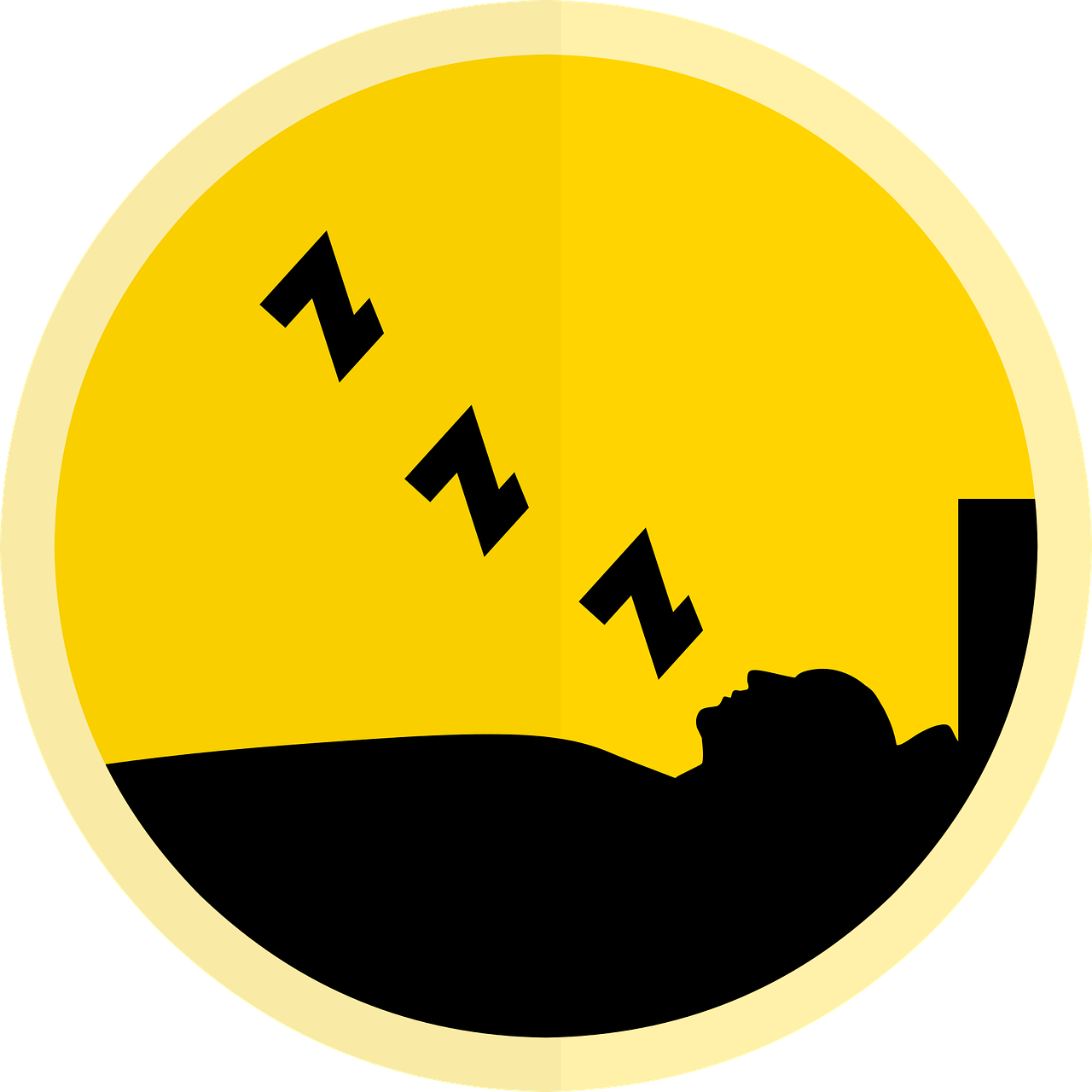
Falling asleep while using oxygen can be difficult, especially if you have trouble sleeping in the first place. If your doctor recommends using oxygen while you sleep, this means that your blood oxygen levels are low enough even while resting. Therefore, getting accustomed to sleeping while using your oxygen is necessary for getting the most out of your oxygen therapy.
Luckily if you have the One G4,it is a approved for nighttime use while you sleep because it is equipped with Intelligent Delivery Technology. As long as you don’t require a CPAP or BiPAP machine to sleep, the One G4 should work for you while you sleep!
Inogen’s Intelligent Delivery Technology
The Intelligent Delivery Technology works by being more sensitive when detecting your breath and it is more efficient at delivering your oxygen to ensure minimal amounts of your oxygen get wasted.
To ensure a minimal amount of oxygen gets wasted, Intelligent Delivery Technology delivers your oxygen within the first 400 milliseconds after your G4 detects your breath. This almost guarantees that you are receiving the full bolus dose of oxygen.
When you sleep, your breathing rate slows. Intelligent Delivery Technology monitors your breath rate and it will increase or decrease the amount of oxygen in each bolus dose depending on your breath rate and the oxygen setting you are using. So, if you are breathing at a rate of 10 breaths per minute your Inogen One G4 will double the amount of oxygen per bolus dose compared to if you were breathing at a rate of 20 breaths per minute. This guarantees you are getting your required oxygen!
{{cta('fa8abc2a-1e88-4fa3-82fd-1cb5b9ed43b2','justifycenter')}}
One of the major reasons why other pulse flow portable oxygen concentrators don’t work for nighttime oxygen while you sleep is that they only detect a breath when you inhale through your nose. This is nearly impossible to control while you’re sleeping. With the Inogen One G4 you won’t have to worry about that because it will even detect shallow mouth breaths while you sleep to deliver your oxygen.
If you aren’t sure if the Inogen One G4 will work for you at night, you can always speak with your doctor about it or get a sleep test to make sure before you try it yourself.
Inogen One G5
The Inogen One G5 is the portable oxygen concentrator that truly has it all. It weighs less than the Inogen One G3, has improved battery life compared to the G3 for extended mobility, you can enjoy interruption free oxygen therapy sleep mode technology, and it is easy to carry with you wherever you go!
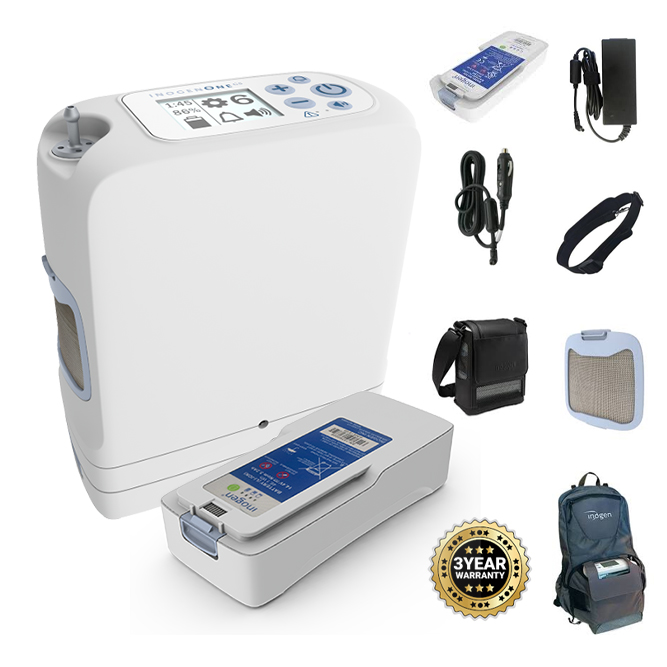
Size and Weight of the G5
This is a 4.7 pound device that stands at 8.15" H x 7.19" L x 3.26" W. The One G5 comes with a G5 custom carrying case, so it will sit perfectly nested into a protective case that you can strap over your shoulder. Or you can purchase the One G5 backpack, that is awesome for longer trips away from home because you can fit you One G5 along with extra batteries, charging cables and all of your personal items.
Unbeatable Battery Life
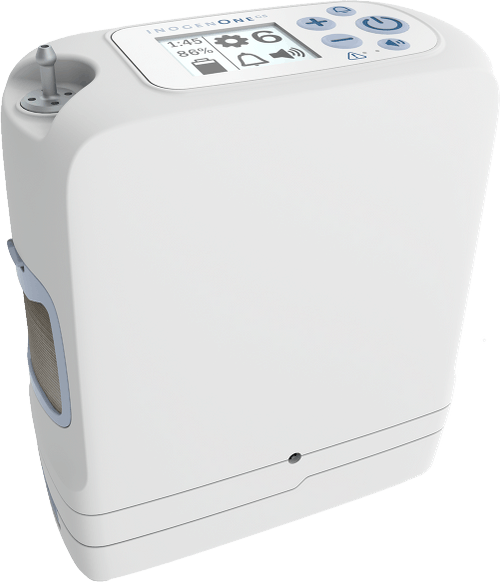
Similarly to the One G3 and One G4, the One G5 has two battery options. You can go with the single battery that comes with the device, and this will last you 3.5 hours on a flow setting of 3. If you decide to upgrade to the one G5 double battery, you will get 7 hours on a flow setting of 3!
Having a device that will last this long will give you the freedom to breathe without worrying about running low on oxygen. You will find yourself enjoying life more and stressing less, its a simple thing that makes a huge difference in wellbeing.
You can recharge the One G5, One G3, and One G4 one of two ways, you can either use a traditional wall outlet, or you can even use the DC charger that adapts to the cigarette lighter in your car, so you can also charge your device while you drive.
Also, you can continue to use the device while it charges, so you don’t have to worry about the periods of time you spend with your device attached to the charger.
If you do not like to relax while your device is plugged in, you need an external battery charger for your portable oxygen concentrator. This will allow you to charge the batteries while you’re on the go. Just be sure you plug in the external charger every night so it is ready to be used the next day!
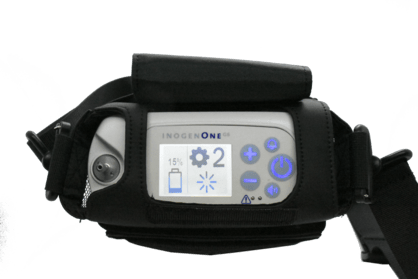
One G5 Powerful Flow Settings
The flow settings on the One G5 can cover just about any pulse flow oxygen patient. The settings go all the way up to 5, or 1260 ml/min. This is great for respiratory patients whose current oxygen setting is any from 1-4, allowing wiggle room to increase the dosage of oxygen in the case of exalted symptoms for example, a COPD exacerbation, or if your disease progresses.
Sleeping with the One G5
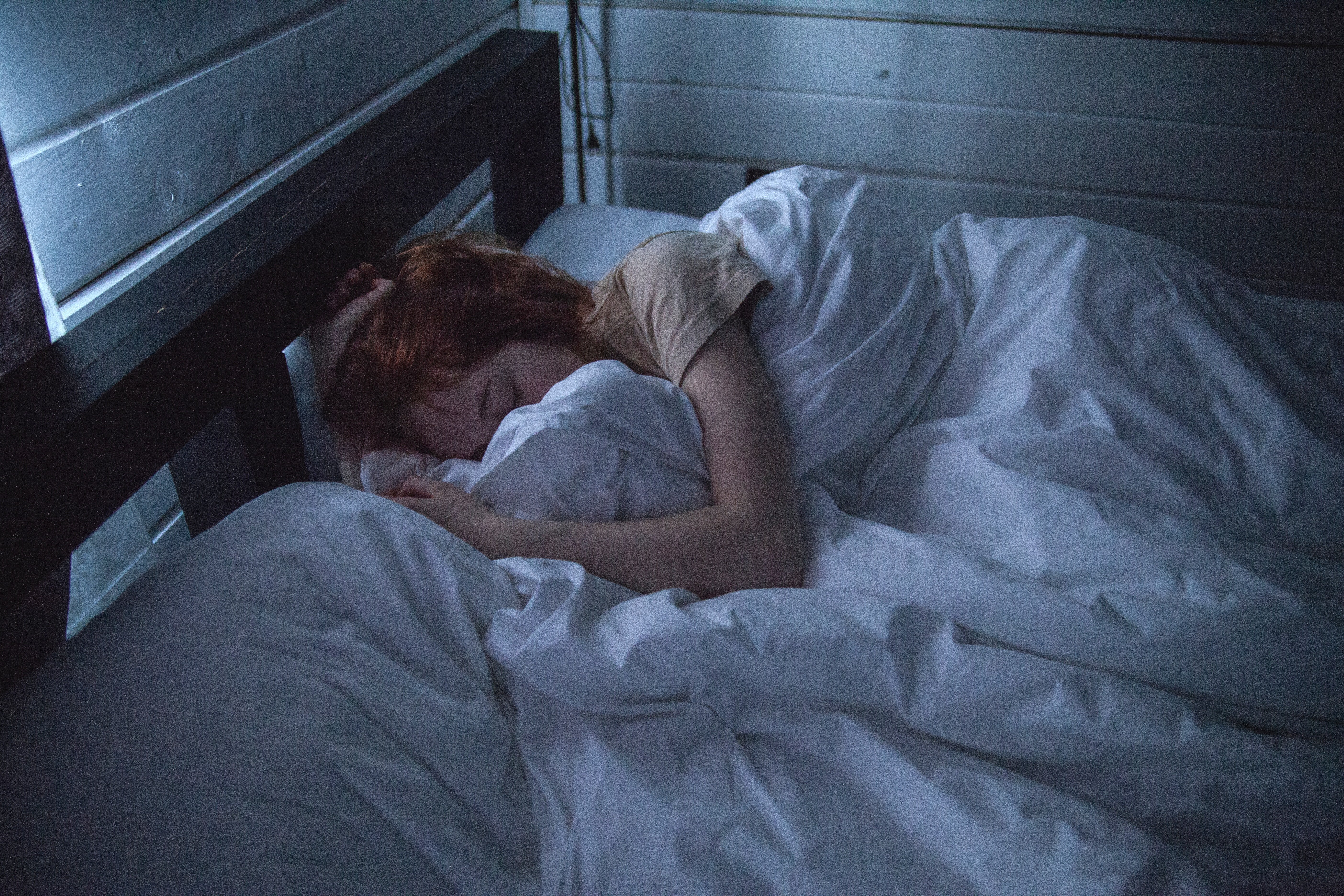
If your doctor approves sleeping with oxygen and you specifically talk to them about using the Inogen One G5 while you sleep, and you do not use a CPAP or BiPAP machine, you are able to sleep soundly with the One G5 thanks to the presence of Inogen's intelligent Sleep Mode Technology.
Essentially what this means is that as your breathing rate becomes more shallow as you sleep, the Sleep Mode Technology will go to work by increasing each bolus dose of oxygen.
Even if you are a mouth breather, the Sleep Mode Technology is able to detect shallow mouth breaths that are frequent when sleeping. This will then tell the Inogen One G5 to trigger a bolus dose based upon your specific fixed minute volume.
Overview
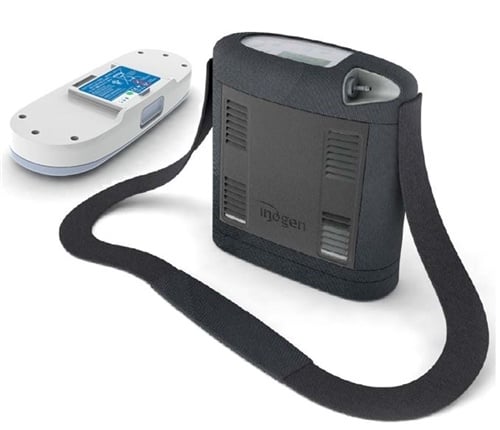
Overall, the One G3, G4, and G5 are great portable oxygen concentrators, whichever you decide on should be based on your oxygen requirements first and foremost.
You can rest assured when you purchase an Inogen device you are getting a quality and reliable oxygen device. If you have any questions about these devices or any others please email us at info@lptmedical.com or you can give us a call and speak with a respiratory specialist at 1(800)-846-1201.
To learn more about how much a portable oxygen concentrator costs, a simple google search will not explain in full all of the sale prices, nor will you be able to see the discounted prices on used and refurbished units.
Due to the manufactures advertising policy, sellers cannot show their marked-down prices, this is a common misunderstanding in the medical equipment world, and it can seem misleading at first glance. The best way to know you are working with an ethical company, and real people, is to call and speak to one of us!
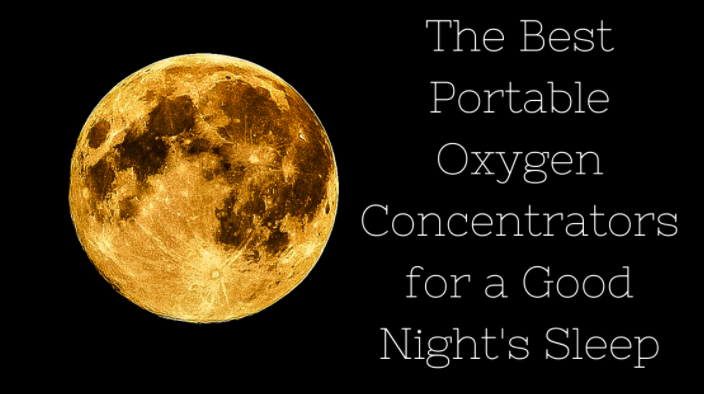
Many people with COPD or other respiratory diseases, are shocked when their doctors inform them that they need to start using supplemental oxygen, and this shock doesn’t go away every time they recommend you rely on supplemental oxygen more and more, until eventually you are using your oxygen device, 24/7.
The shocking part about this, is that, you may feel as if you are building a dependence on the oxygen. However this is not the case.
It is your supplemental oxygen therapy that is giving your blood, bones, and muscles the oxygen it needs to function properly. Without it, your body and organs would be craving oxygen it needs to survive.
Therefore, the tricky part about oxygen therapy is adjusting to it so that you can reap all of the benefits this respiratory therapy has to offer you!
Once you are willing to admit that your supplemental oxygen is saving your life and your livelihood, you can begin to enjoy all of the activities you once did, only now you are either rolling an oxygen tank behind you, or carrying a portable oxygen concentrator while you do so.
How To Get A Full Night's Sleep While Using Oxygen
Once of the best “activities” you likely enjoyed before you had COPD, was sleeping! And you might have noticed, depending on how severe your COPD is, that your complication breathing is affecting how well you sleep. Sleep problems originate in you from a variety of issues, one of which can be reduced oxygen saturation.
Low oxygen can contribute to sleep problems

Many people with COPD and pulmonary fibrosis have problems sleeping, which increases fatigue throughout the day and affects your quality of life.
If you have COPD you are particularly vulnerable to wake during the rapid eye movement, or REM, part of your sleep cycle. REM sleep is the most rejuvenating part of your sleep cycle, but it poses a problem for COPD patients because during REM sleep, your diaphragm controls your breathing, while the smaller accessory muscles are temporarily not functional.
This means that your blood oxygen levels may fall causing you to wake up, disrupting your very important REM sleep.
If this seems to be the case for you, you should ask your doctor about the possibility of using oxygen at night. This may help you to sleep better and improve how you feel in the morning.
.jpg)
If you already use oxygen while you sleep, you might have noticed that you breathe through your mouth, rather than your nose and through your cannulas. This means you still are not getting enough oxygen while you sleep.
Your doctor may diagnosis you with a sleeping disorder if you sleeping complications can be attributed to certain symptoms you experience. If so, your doctor will have you start using a standalone device that will help you get enough oxygen into your blood while you sleep.
CPAP and BiPAP machines for sleep apnea
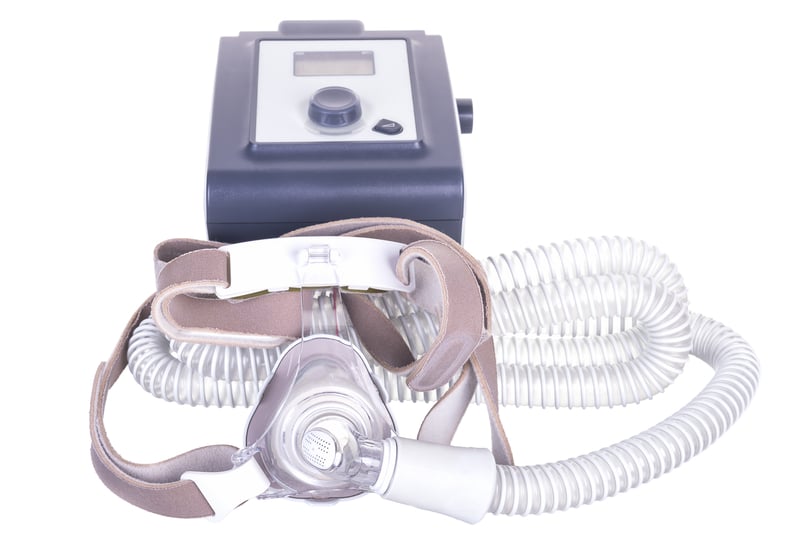
A CPAP machine is a device that compresses ambient air to create pressure for therapeutic purposes normally for sleeping. It is usually used at home to treat obstructive sleep apnea (OSA), but it can also be used in emergency settings in a hospital by a respiratory therapist.
If you have OSA, the main problem is that your throat collapses while you are sleeping, causing you to snore. Even if snoring does not bother you, the repeated collapsing of your throat actually obstructs airflow into your lungs, which can eventually lead to dangerously low oxygen levels in the blood.
Therefore, using a CPAP machine helps keep you throat open allowing oxygen to flow freely even while you are sleeping. If you still have trouble maintaining a healthy oxygen level while you are sleeping, oxygen concentrators can be used with a CPAP device for these certain situations.
So, if you have a lung disease like pulmonary edema or COPD on top of OSA, it might be necessary to add in oxygen to the tubing of your CPAP machine. This will achieve both functions at the same time: increasing the amount of oxygen you receive with each inhalation and also generating enough pressure to keep your throat open.
The other sleeping device you might need to use if you have COPD, obstructive sleep apnea, obesity hypoventilation syndrome, pneumonia, or asthma is a BiPAP machine.
A BIPAP (Bilevel Positive Airway Pressure) machine delivers air flow to your airway at a prescribed pressure similarly to a CPAP machine. However, the difference is that there are two pressures, one for your inhalation and one for your exhalation.The inhalation pressure is set higher to keep your airways open, whereas the exhalation pressure is set lower to assist in an easier more complete exhalation.
It is important to have a oxygen concentrator that is compatible with a CPAP or BiPAP machine, so that if you ever need to use both devices while you sleep you have that option.
Here are the BEST portable oxygen concentrators designed with a great night’s sleep in mind

It's no surprise that the best way to get the best night’s sleep when you also have to use oxygen, is having the best breathing equipment available!
Here are 5 of the best portable oxygen concentrators on the market that will help you get to sleep and stay asleep.
- Inogen one G5 portable oxygen concentrator
- Respironics SimplyGo portable oxygen concentrator
- Oxlife Freedom portable oxygen concentrator
- SeQual Eclipse 5 portable oxygen concentrator
- Inogen One G3 portable oxygen concentrator
Inogen one G5 portable oxygen concentrator
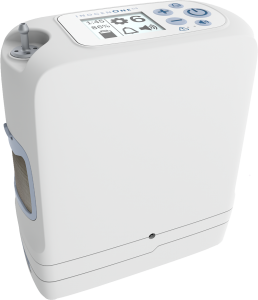
With the Inogen One G5 you will be able to enjoy oxygen delivery benefits at night while you sleep thanks to the presence of Inogen’s intelligent Sleep Mode Technology.
Essentially what this means is that as your breathing rate becomes more shallow as you sleep, the Sleep Mode Technology will go to work by increasing each bolus dose of oxygen.
{{cta('fa8abc2a-1e88-4fa3-82fd-1cb5b9ed43b2','justifycenter')}}
Even if you are a mouth breather, the Sleep Mode Technology is able to detect shallow mouth breaths that are frequent when sleeping. This will then tell the Inogen One G5 to trigger a bolus dose based upon your specific fixed minute volume.
Now, most of our customers are able to use this technology to sleep with the Inogen One G5, however, we highly recommend you first speak with your doctor before using this while sleeping.
Respironics SimplyGo portable oxygen concentrator
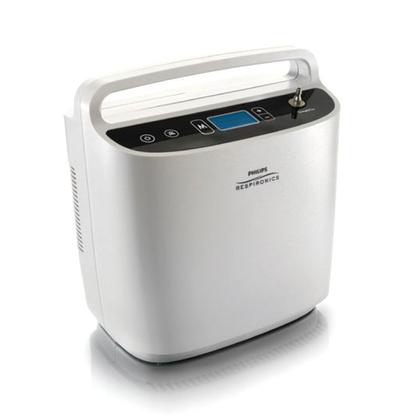
The Respironics SimplyGo portable oxygen concentrator is arguably the best oxygen device for 24/7 use, because it is equipped with both pulse flow and continuous flow settings. Having a portable oxygen concentrator that is designed to run 24/7 has major advantages when it comes to getting a good night’s sleep.
The Respironics SimplyGo is CPAP/BiPAP compatible and it is equipped with both pulse flow and continuous flow oxygen delivery modes to cover you 24/7. It offers pulse flow settings 1-6 and continuous flow settings 0.5-2.0 LPM.
One additional feature the SimplyGo has to offer is its sleep mode technology! Whether you’re on the airplane or relaxing in your chair at home, and you feel yourself dozing off, you can turn sleep mode technology on to ensure your oxygen gets delivered while you are sleeping.
When you turn sleep mode technology on your SimplyGo increases its sensitivity to detect your breath and it softens the pulse flow delivery so it doesn’t wake you up. Don’t worry, if your SimplyGo doesn’t detect a breath or if you breathe through your mouth it will automatically switch back over to continuous flow to ensure you get your required oxygen.
Oxlife Freedom portable oxygen concentrator
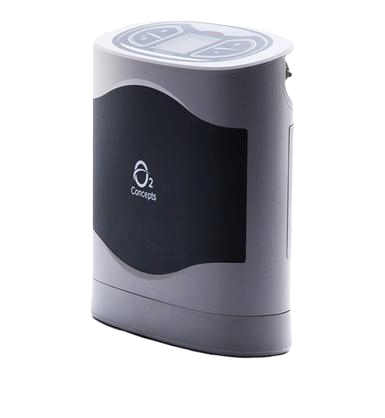
The Oxlife Freedom portable oxygen concentrator was designed to be your 24 hour a day oxygen solution. During the day it’s long battery life and quick recharge time will allow you to spend a busy day running errands or have a fun day with family and friends, or a night out on the town.
When it’s time to sleep the quiet operation of the Oxlife Freedom won’t disturb your rest or your companion’s. The intelligent delivery system ensures that you stay properly saturated throughout the night. The machine senses as breathing gets shallower or slower and will adjust dosage for proper titration.
SeQual Eclipse 5 portable oxygen concentrator
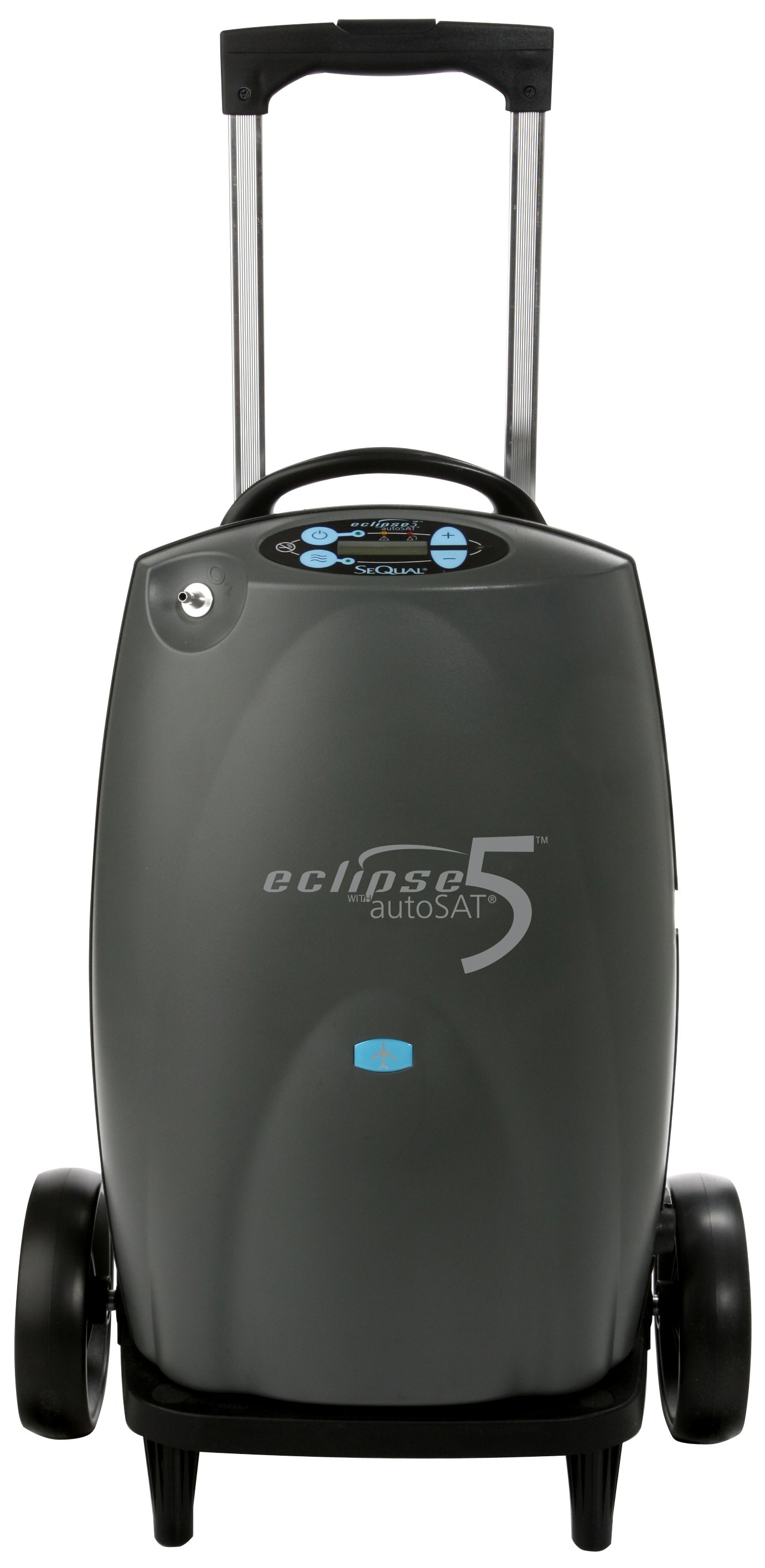
The SeQual Eclipse 5 portable oxygen concentrator offers both continuous and pulse flow settings. It will go up to a setting of 9 on pulse and it will go from 0.5-3.0 LPM on continuous flow.
It can be used 24/7 365 days a year and it is CPAP/BiPAP compatible so you can use it while you sleep if you need to.
Inogen One G3 portable oxygen concentrator
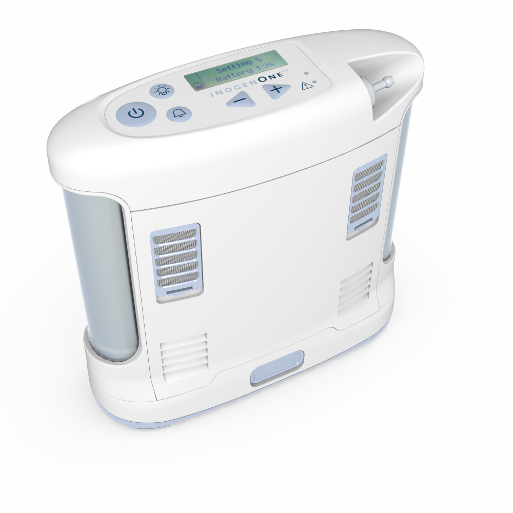
The Inogen One G3 portable oxygen concentrator, weighs 4.8 pounds and offers up to 8 hours of battery life, the Inogen One G3 has been one of the most popular portable oxygen concentrators on the market for over two years!
We could talk about this unit’s small, lightweight, and durable design, however, it also gives patients 24 hours a day 7 days a week of reliable oxygen delivery.
Despite the fact that the Inogen One G3 is a pulse flow portable oxygen concentrator, the majority of oxygen patients can still use this machine for nighttime oxygen delivery! Just like the Inogen One G2, the G3, it is equipped with Intelligent Delivery Technology.
Inogen’s Intelligent Delivery Technology ensures that your oxygen is delivered within the first 400 milliseconds after your concentrator detects your breath. This almost guarantees that you’re receiving the entire bolus dose of oxygen delivered by your G3.
Along with delivering oxygen within the first 400 milliseconds, the Intelligent Delivery Technology responds to your breath rate! This feature is what allows you to use your Inogen One G3 while you sleep even though it doesn’t offer a continuous flow.
When you are sleeping your breathing rate decreases. As the Intelligent Delivery Technology monitors your breath rate, it will automatically increase or decrease the amount of oxygen per bolus dose depending on the oxygen setting and your breath rate.
For example, if you are breathing at a rate of 10 breaths per minute the Inogen One G3 will double the amount of oxygen per bolus dose than if you were breathing at 20 breaths per minute. This is to ensure you are getting your required oxygen.
One of the big reasons pulse flow portable oxygen concentrators aren’t recommended to use at night while you sleep is that they don’t detect mouth breaths. The Inogen One G3, on the other hand, will be able to detect shallow mouth breaths! So as long as you don’t need a CPAP or BiPAP machine at night, the Inogen One G3 should work for your nighttime oxygen delivery system.
5 habits to practice for better sleep
On top of having the best breathing equipment, it is also important to practice these lifestyle tips that will help you get to sleep faster and staying asleep throughout the night
1. Try to get 30 minutes of exercise in during the day
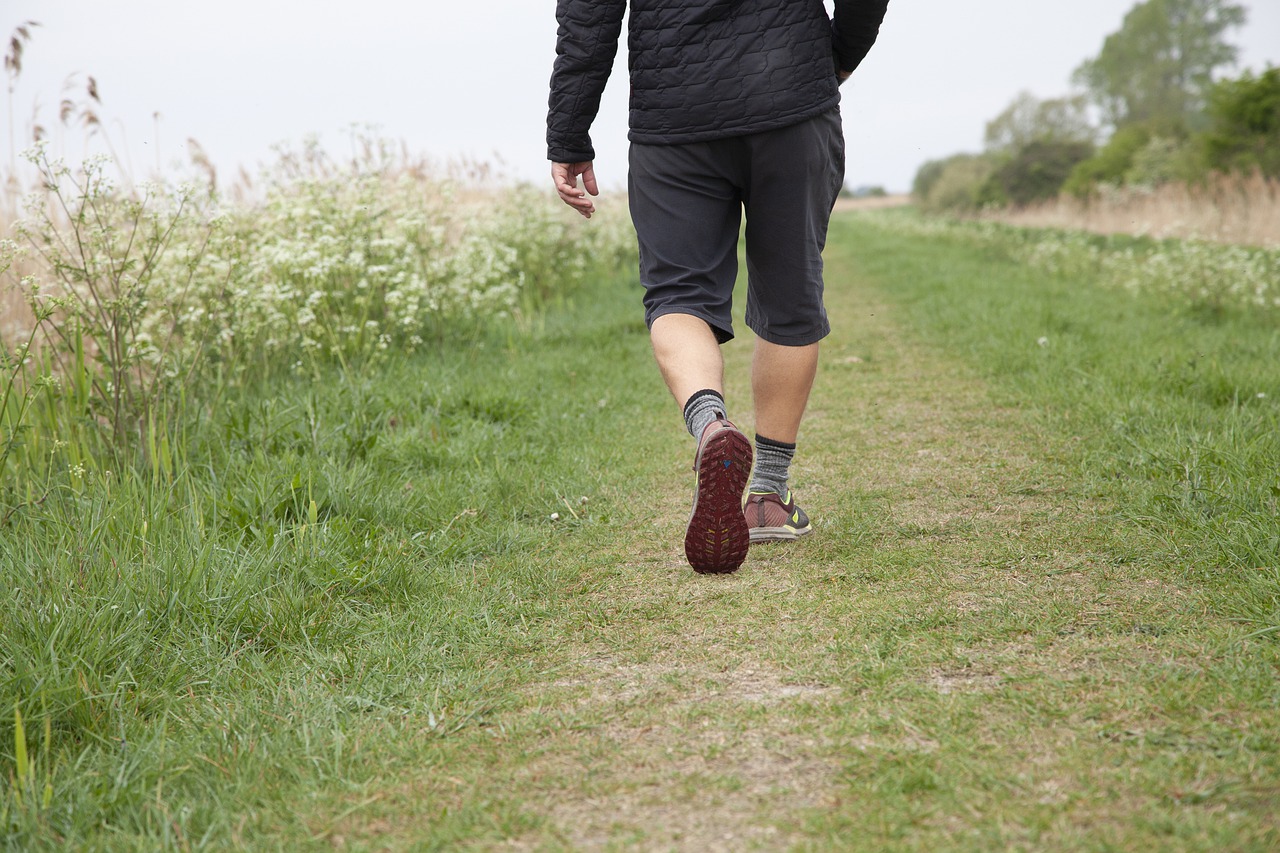
Exercising during the day will not only improve sleep quality but also sleep duration at night. Exercise is one of the best ways to treat your COPD or other respiratory problems because it straightens your lungs and they are able to function better during the day and night.
As few as ten minutes of aerobic exercise, such as walking, cycling or taking a tai chi class, can dramatically improve your sleep quality.
The best way to see results fast, is to exercise on a regular basis.
2. Avoid carbonated beverages late at night.

Soda and caffeinated beverages before bed are obviously not going to help you get to sleep faster, but what you might have not known is that carbonated drinks in general are not good for sleep.
By drinking carbonated beverages, your body will produce gas that pushes on your diaphragm, making breathing more difficult.
For that reason, it’s a good idea to avoid carbonated beverages before bed. This includes sparkling water for hydration or a glass of ginger ale to help settle your stomach.
3. Establish a sleeping routine
Try to go to bed and wake up around the same time every day. This means weekends, too! If you need a nap in the middle of the day, you can also add this into your sleep schedule.
Try your best to be strict about this! When your body has a sleep cycle to rely on, you can more naturally achieve sleep, even if you are sleeping with an oxygen concentrator during the night.
4. Designate your sleeping spot
As part of establishing a sleeping routine, you can also add certain bedtime activities into your schedule so that you body can adjust to when it is time to fall asleep. For example, you can start reading before bed and once this is a regular thing, your body and mind will calm realizing it is time to sleep.
It’s important that you designate your bed – and bedroom – for sleep. Do not spend time working or being actively awake in your bed.
5. Practice techniques for clearing your airways before bed
.png)
Techniques for airway clearance are something you can practice throughout the day, especially after meals; however, this is especially useful for getting a good night’s sleep. Airways clearing techniques may help you more naturally maintain oxygen levels throughout the night, whether or not you are sleeping with an oxygen concentrator.
One technique is controlled coughing for COPD.
Sleeping and COPD
There are a lot of daily struggles that come with having a disease like COPD and this disease is not going away.
The best way for you to live with COPD, is to manage and treat it with care and attention. This process starts and ends with sleeping! The more sleep you get, the better you feel and the more energy you have to exercise, eat healthy, and reach out to loved ones.
{{cta('b59df0c1-c4de-47a8-8e1c-0d33d4b414aa','justifycenter')}}
One of the biggest mistakes you can make with COPD, is living with restless nights because of how easily you can solve this problem. If the issue is lack of oxygen, you should reach out to us at LPT Medical so that we can help you find the best oxygen concentrator at the best possible price that will fit your oxygen requirements and get you the sleep you need to operate productively during the day.
You can start by calling us at 1-800-946-1201 and speaking with one of our respiratory specialists.
If you already have an oxygen concentrator, and you still have trouble sleeping, try adjusting to a strict sleep scheduled and working out at least 10 minutes a day.
A combination of the right sleeping equipment, oxygen therapy, and daily habits will help you get to sleep you need. You will notice after a few weeks with sufficient sleep, your mood, and overall wellbeing will improve!
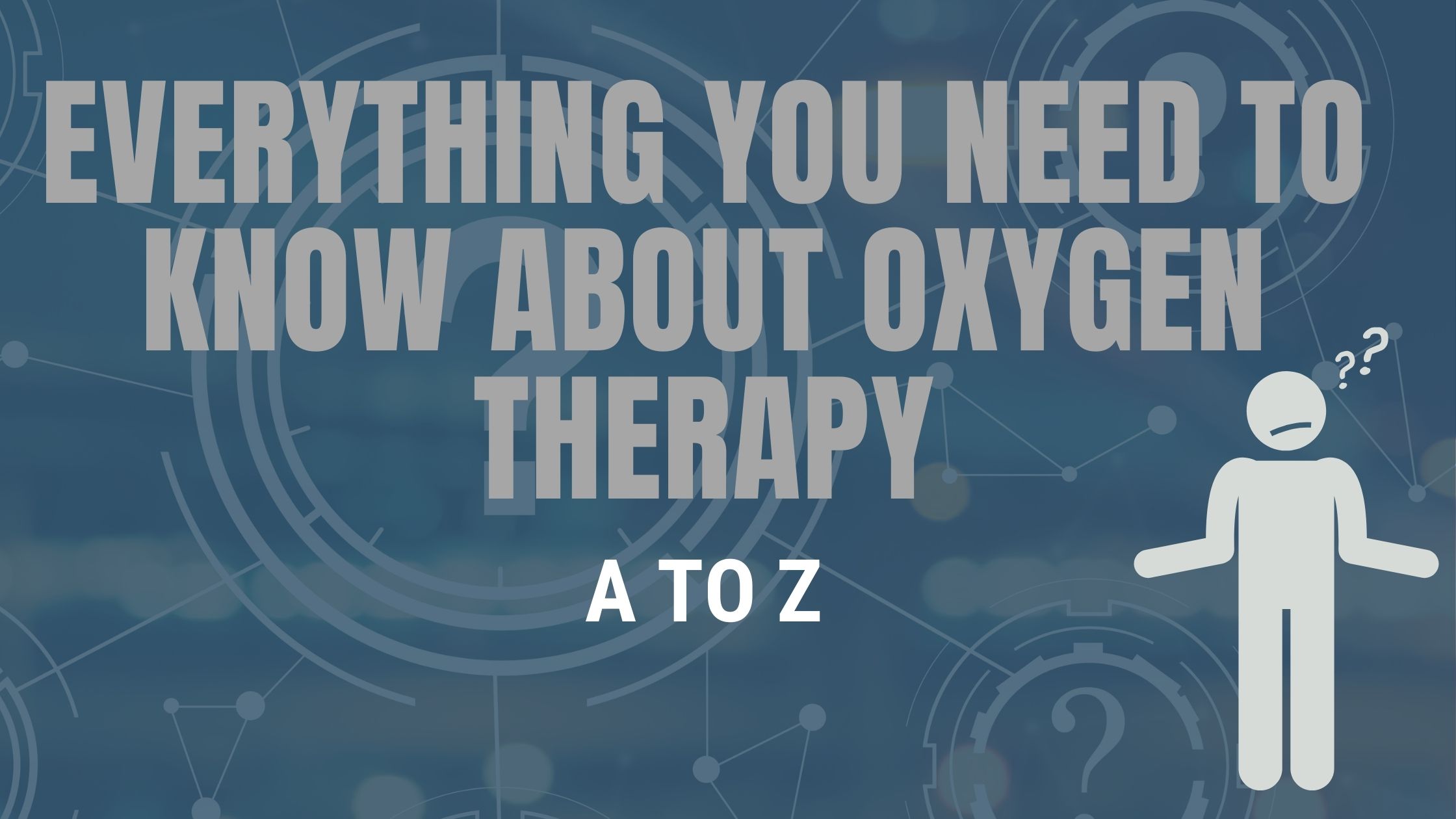
Oxygen therapy has evolved to the point where the oxygen user should not only be getting the oxygen they need to breathe, but the freedom and independence to do more activities, travel, and find happiness in everyday comforts. The demand for oxygen to be user friendly, portable, and noninvasive is hugely due to the fact that every year, about 1.5 million patients in the United States utilize long term oxygen therapy.
However, not every oxygen device can give patients the freedom they deserve. In fact, many oxygen devices tether its user to their home, making travel impossible and exercise unbearable. We are lucky enough to live in an age of innovation and growth, oxygen therapy is no exception. The technology that is used to design and manufacture modern oxygen devices has improved drastically and has come a long way from the heavy and bulky oxygen reservoirs used in the past.
{{cta('fa8abc2a-1e88-4fa3-82fd-1cb5b9ed43b2','justifycenter')}}
Shopping for oxygen
It is important to note, that with the growth and demand for new forms of oxygen technology, came a lot of cheaply made replicas and non-licensed distributors selling malfunctioning oxygen machines. It is important for people shopping for oxygen therapy devices to speak with their doctors and find the most trusted oxygen brands and suppliers that they can work with.
If you are looking into buying your first or a new oxygen device, it is not only important to do your research, but you also should not go with the cheapest option you find on Google. Your oxygen device is going to be your trusty companion all day and all night for the rest of your life, so making sure you get the right device for your oxygen needs that also fits into your lifestyle is essential for your wellbeing.
In this article we talk about a number of aspects surrounding oxygen therapy:
- We look at the evolution of oxygen
- Understanding flow rates
- We will go over your oxygen therapy options
- We will give you a list of the most trusted names in oxygen manufacturing companies
- We will discuss our best selling portable oxygen concentrators
- How to make the most of your oxygen therapy
Evolution of Oxygen Devices
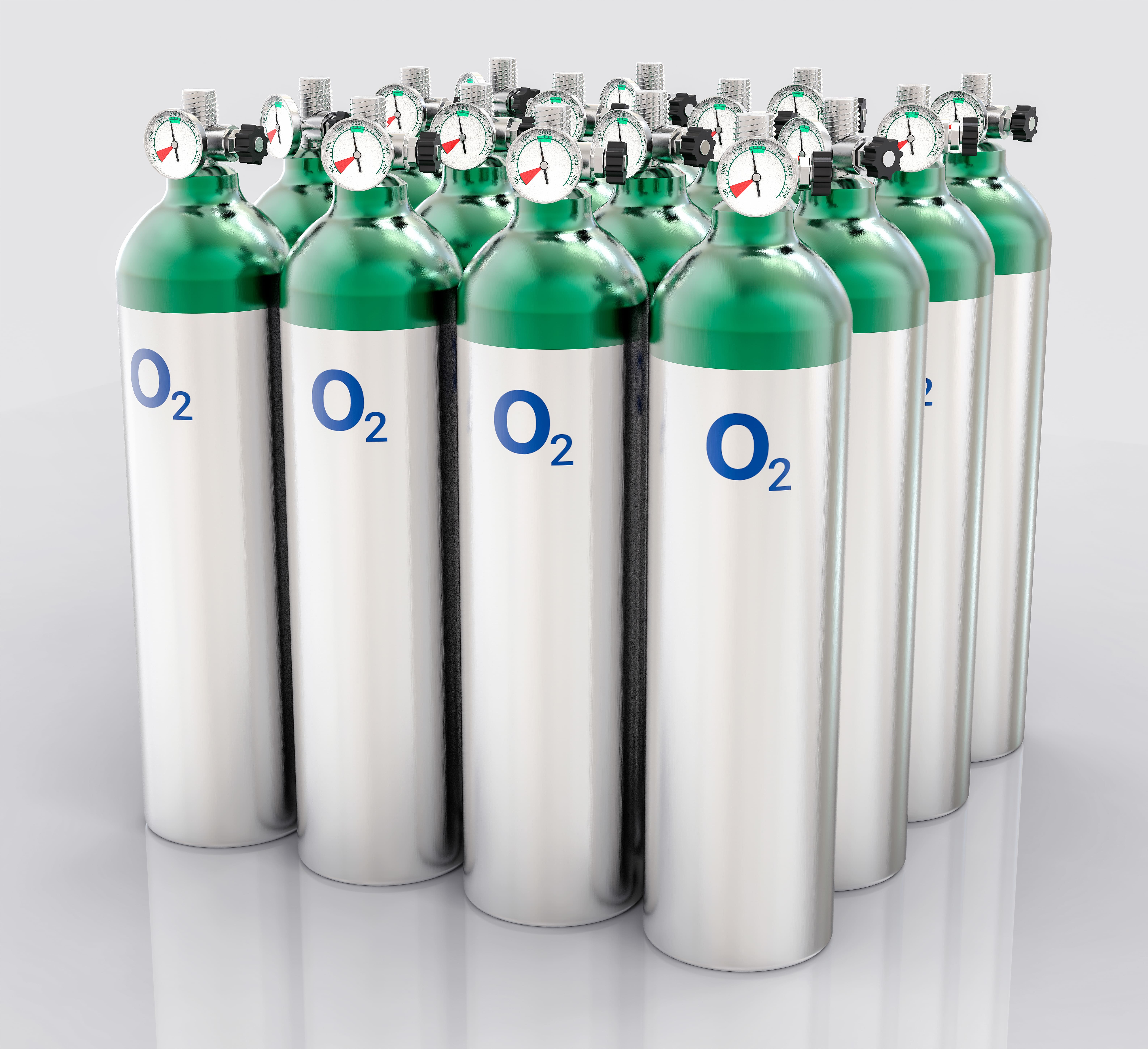
Long term oxygen therapy (LTOT) is prescribed to patients with chronic obstructive pulmonary disease (COPD) and other chronic lung diseases. LTOT increases survival and improves the quality of life of users with hypoxia, it can be very dangerous if used incorrectly, which is why oxygen is prescribed to patients by their doctors after taking a series of pulmonary function tests.
In the beginning, pressurized cylinders were the only available option for long term oxygen therapy. Then in 1965, the first home based liquid oxygen system was invented which gave the oxygen user both an immobile and portable oxygen system. This presented a great advantage, where the oxygen user finally had the ability to refill their portable liquid oxygen system and their smaller portable system whenever needed.
In 1973 home oxygen concentrators became readily available, these devices operated by filtering nitrogen from the air and producing medical grade oxygen. Oxygen concentrators provided an unlimited supply of oxygen, and it ran off of electricity. While this oxygen system was safe and efficient it was stationary, and tethered its users to their home where there was electricity.
Today, there are combinations of oxygen devices:
- Compressed gas canisters
- Liquid oxygen tanks
- Concentrators
- Liquid oxygen portable canisters
- Battery operated portable oxygen concentrator
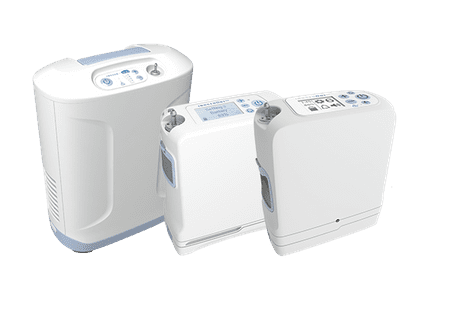
Every home oxygen system has a different performance characteristic, with its own set of capabilities and applications. Your doctor should be aware of product variability in performance when identifying specific systems that would work for you.
Your Oxygen Therapy Options
There are so many home oxygen therapy options to choose from that to the point where it is notoriously difficult to know what equipment is right for you, what is available and the capabilities and drawbacks of each device.
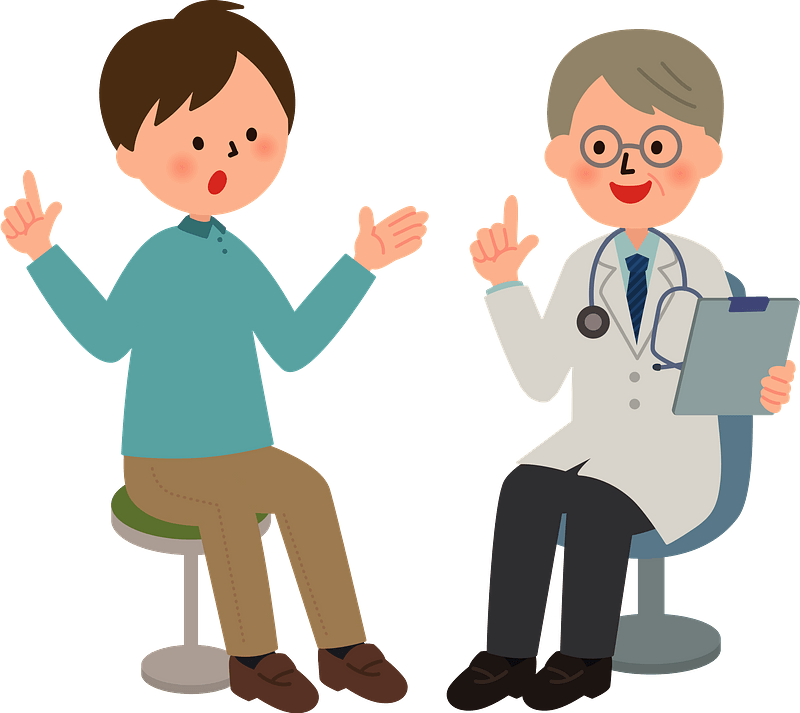
So while your doctor will typically prescribe you a flow rate and frequency for home oxygen therapy based on the results of your pulmonary function, the oxygen provider is expected to supply the necessary equipment based on your prescription and recommendations from your doctor. Therefore, it should be evident that it is important to work with the most trustworthy oxygen providers that supply the most trusted names in oxygen manufacturing.
Flow rates
At one point in time, there were only continuous flow oxygen devices, until intermittent-flow devices were introduced in 1983. The continuous flow devices distribute the oxygen at a consistent rate, even while you exhale. Intermitted-flow devices were created to conserve the oxygen that is wasted while exhaling. Intermittent-flow devices only admit oxygen when the user inhales, and it will pause during the exhale.
Both continuous flow devices and intermittent-flow also known as pulse flow devices, are still used today and the flow rate you use will depend on your oxygen requirements that will be established by your doctor. From there it will be the responsibility of your oxygen supplier to adhere to your oxygen requirements and match you with a device that will meet these needs.
There are three main forms of home oxygen therapy that offer both continuous and pulse flow operations listed in the following sections.
Oxygen gas
.jpg)
Oxygen gas can be stored in a portable tank also known as compressed gas systems. You would use a larger stationary concentrator while you are at home, and you would have a smaller oxygen tank that can be taken with you outside the home.
The portable oxygen tanks are very small and only deliver oxygen in pulses, not continuously in order to save oxygen, so you will not run out. This is of course not an option for everyone, because many people do need the continuous flow of oxygen in order to reap the benefits of oxygen therapy.
Liquid oxygen
Liquid oxygen can be stored in a portable tank, but the difference between the gas and liquid oxygen is how the liquid form is more highly concentrated, and more oxygen can fit in a smaller tank. Active people would prefer this method because it is much more portable, but it will still need to be refilled often.
Most people with liquid oxygen and oxygen gas systems are able to get their oxygen delivered to their home, and this will depend on your location.
Portable oxygen concentrators
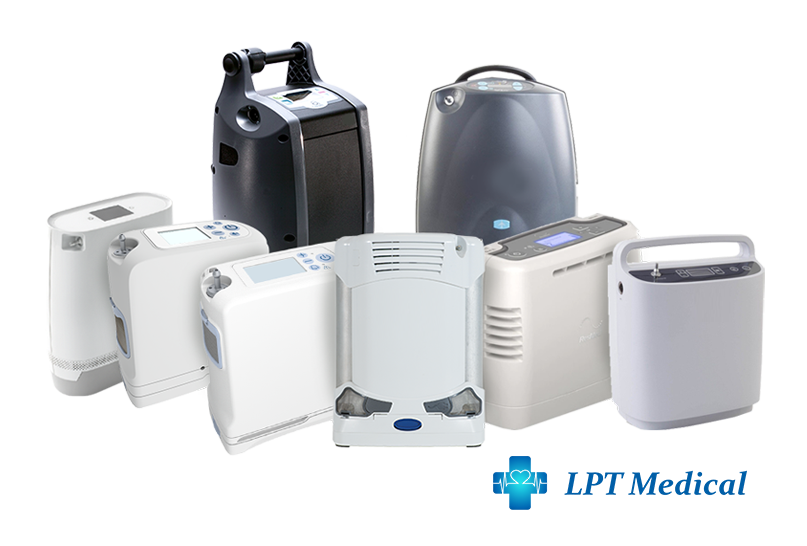
Portable oxygen concentrators are the most portable option. An oxygen concentrator is a device that takes oxygen from the room, filters out impurities, and concentrates the air into medical-grade oxygen. The most obvious advantages of portable oxygen concentrators is that they are less expensive and don’t require refilling.
So while there are only 3 main forms of oxygen therapy, the diversification between each method is vast, and you may want to read more about the comparison between oxygen device systems, you can do so by clicking here to read Oxygen Concentrators vs. Oxygen Tanks: A Simple Comparison Guide.
A lot like buying a car, the next step, is deciding which brand of POC you will choose and then deciding on the model you want, luckily your choice are limited by your oxygen prescription, but for most people they will have more than one option, and picking the right device can be overwhelming.
Here are a few of the most trusted names in oxygen manufacturing.
Oxygen Manufacturing Companies
Of all of the oxygen manufacturers out there there are a few that continuously outperform their competitors, bringing oxygen users the most efficient, cost effective, overall best oxygen equipment to the market every year, for more reasons than one.
- Inogen
- ResMed
- Philips Respironics
- Drive Medical
At LPT Medical, quality is the only option. Which is why, LPT Medical offers products from all of the most reputable manufacturers in the industry. These are the companies that are pushing the boundaries of what’s possible for patients suffering with a debilitating respiratory condition. And by offering these brands, we ensure that more people around the country have access to the most state-of-the-art oxygen therapy equipment in the world.

Best Selling Portable Oxygen Concentrators
The make and model of your device will be narrowed down based on your oxygen requirements. From there, one of our knowledgeable respiratory specialists at LPT Medical reviews your needs and matches you with a variety of devices that vary in weight, battery life, and other factors. Our customers have reviews our specialists ability to pick out the best device, and we are thrilled with our performance.
Our selective and integrated process working with every customer on a personal level has given us worldwide recognition as one of the most trusted names in the world of oxygen therapy products offering home oxygen concentrators, portable oxygen concentrators, CPAP and BiPAP machines, and all the accessories you need to make the most of them.
That being said, we know which devices work for many people and for those who do qualify for the following portable oxygen concentrators, are always our happiest customers!
Inogen One G5 and the Inogen One G3
The Inogen One G5 portable oxygen concentrator in the best selling pulse flow oxygen device there is because it meets mostly every oxygen patient’s needs. It is powerful enough to cover a user’s oxygen prescription, by going up to a level 6 which is 1260 ml or oxygen per minute.
The battery life of the Inogen One G5 is unbeatable, the Inogen One G5 Double Battery provides the same reliability as the G5 Single Battery but adds up to 13 hours of additional battery life on a single charge.

So this device can go with you anywhere, and last for hours, but it is also very lightweight. You can carry the One G5 with you in the One G5 backpack or the custom carrying case, but with either method you will barely notice the 4.7 pounds.
The Inogen One G3 goes up to a level 5 in pulse flow output, and weighs the same as the One G5. it is a great option for people who don’t mind having older generations that are still high quality and reliable. The One G3 is still rated the number one pulse flow oxygen concentrator because of its long-standing record and dependable results. Not to mention the carrying case is designed in a classic and sleek style, so it doesn't look like a medical device

The 8-cell battery that comes with the One G3 is very powerful, but you can also get the Inogen One G3 16-Cell Battery if you value that extra long lasting battery life.
The G3 is also one of the quietest portable oxygen concentrators available, but it also help you pay attention with audible alerts in case of a power outage, no breath detected alarms, and oxygen purity checks. If your oxygen level ever falls below required levels, the One G3 will let you know immediately.

Caire Freestyle Comfort
The Caire Freestyle Comfort portable oxygen concentrator has been compared to the Inogen One G5 in similar respects to its long lasting battery life and lightweight design. The Freestyle Comfort is even lighter than the One G5 but the battery doest last quite as long.
Similarly to the One G5 and One G3, the Freestyle comfort has two battery options, the Caire Freestyle small battery, and the Caire Freestyle large battery.
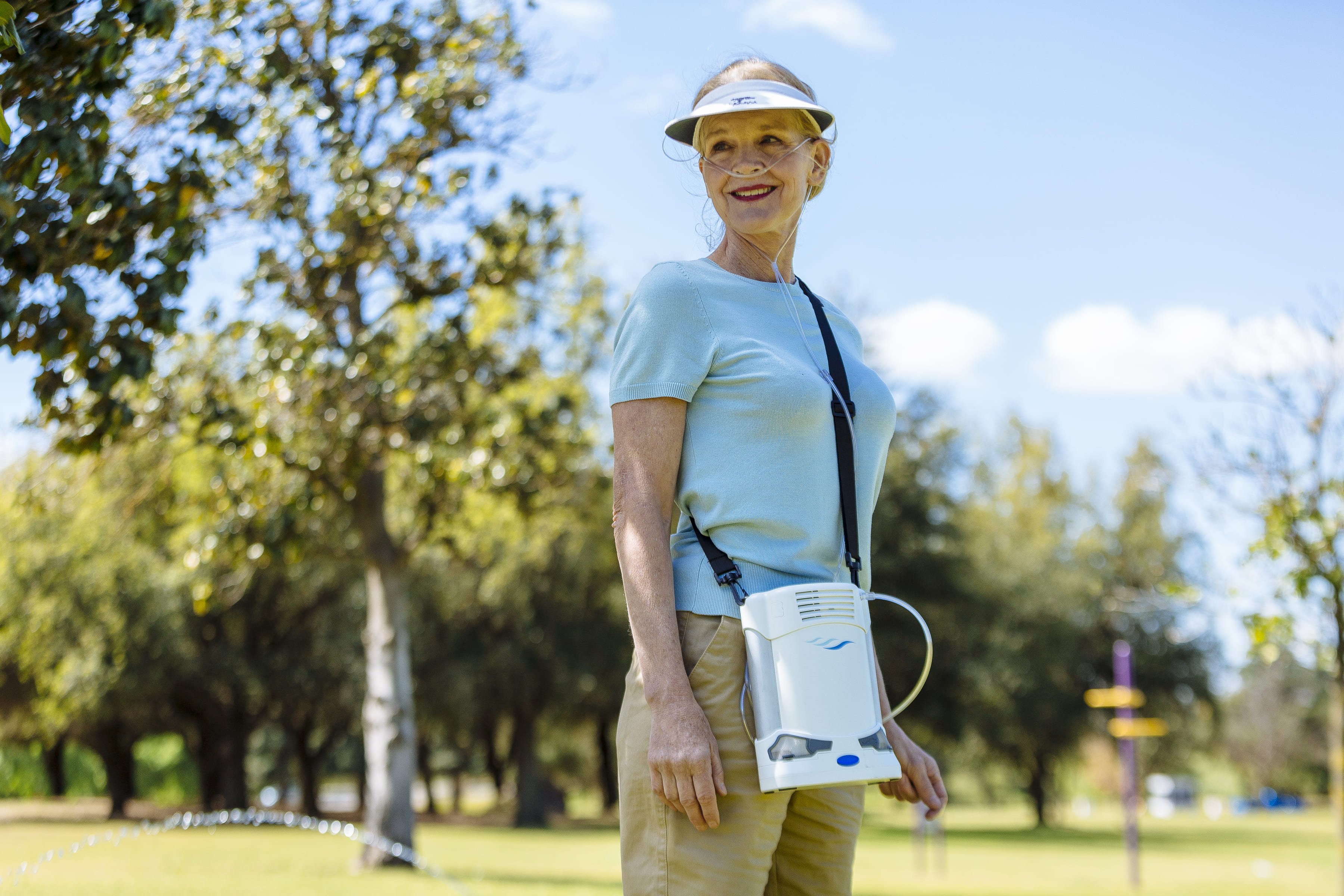
Respironics SimplyGo
The Respironics SimplyGo is the most lightweight portable oxygen concentrator that offers both pulse flow and continuous flow, making this device a hot commodity for people who switch between flow settings.
The long lasting battery life is another huge selling point because people can go longer without having to plug in their oxygen to the car or outlet. When the machine does need to be recharged it is as easy as changing your cell phone, and you can continue to use it as it charges.
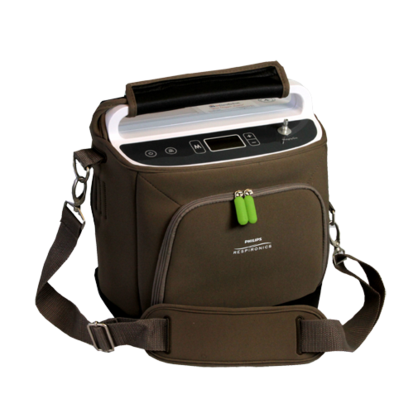
Making the Most Out of Your Oxygen Device
In order to take advantage of all of our devices, including the ones not listed above, you can purchase extra batteries, external chargers, backpacks and carrying cases, and more. Oxygen accessories are designed to make using oxygen therapy easier and more comfortable, and you will quickly learn what aspects of oxygen therapy you want to make more comfortable.

For example, if you notice that the oxygen tubing is putting a lot of pressure on your ears, there are ear pads available to accommodate that pain.
If you notice that your battery is dying too quickly, you can upgrade to the larger battery for extended use.
Devices like the the Inogen one G3 have backpacks and rolling backpacks available, to make carrying the 5 pound device even easier, you can find those items by following the links below:
Inogen One G3 Rolling Backpack by Portablez
GO2 Carryall Inogen One G3 Carrying Bag
If you notice that your tubing tends to get tangled there are Tidy Tubs Oxygen Supply Tubs available to stop this from happening
Here are 4 other ways to take advantage of your oxygen concentrator

1. Consider buying additional oxygen concentrator batteries.
Having an additional oxygen concentrator battery is extremely important for people who enjoy spending extended time away from their home or car. An extra battery can be the difference between having to worry about leaving an event early versus living stress free knowing you have plenty of time with pure medical grade oxygen. This particularly applies to patients who do not get as much battery life, either due to their high-flow rate, or their device just doesn't have that long lasting battery that some do.
2. Keep your spare batteries fully charged and do not forget to rotate them.
Keeping an extra battery without a charge for extended periods of time can actually damage the battery. Oxygen users should always store spare batteries that are fully charged. this is not only better for the battery life overall, but keeping batteries fully charged and ready, allows you to switch batteries at any time without having to worry about damaging them or your POC. You should also rotate batteries if you have more than two and always switch to a fully charged battery.
Tip: If you aren't going to use your spare batteries, store them at a 50% charge to ensure you don't damage any battery cells.
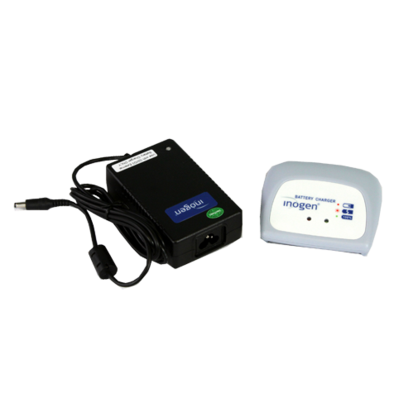
3. Utilize the accessory bag that comes with the package
Most units will come with a custom carrying case, few do not. Theses accessory bag vary in size and color based on the type of concentrator you have has. The accessory bag is an excellent organizational tool that helps you arrange the unit accessories in one particular location without having trouble finding them or risk losing them. Accessory bags usually have padding, zipper or velcro, and easy access to keep the contents safe.
4. Utilize the DC Power Supply.
All POCs come with a DC power supply that can be plugged into the cigarette lighter of a car. Small pulse flow units are totally functional on the DC power supply, which means you can use your device on any flow rate settings, and recharge the battery at the same time. However, the constant flow units carry a few limitations when using the DC power supply. Generally, uninterrupted flow units will continue to work and charge on pulse flow settings 1-4 as well as continuous flow settings as much as 2 LPM.
Overview
Oxygen can be a life saving therapy if you are adhering to your oxygen prescription correctly. If you start to take advantage of you oxygen device, you can find even more independence and more freedom than you had before you needed oxygen. All this requires in knowledge and trust in the process that this life saving therapy, can make a huge difference in the quality of you life.
If this is your first time looking for a portable oxygen concentrator, you probably have a lot of questions that you need answers to. Maybe you’re wondering if your new concentrator will meet your oxygen needs, how long the battery will last, or how reliable it will be. It’s important to learn about these things before purchasing an oxygen machine so that there aren’t any surprises once it arrives at your door.
Quite possibly the most common question we get here at LPT Medical is, “what is the quietest portable oxygen concentrator?” This is a perfectly valid question considering the fact that other oxygen therapy devices like compressed oxygen and liquid oxygen are virtually silent. Since oxygen concentrators work entirely differently than these two devices, many people don’t know what to expect when they purchase one for the first time.
{{cta('fa8abc2a-1e88-4fa3-82fd-1cb5b9ed43b2','justifycenter')}}
In this post, we’ll be taking a closer look at the portable oxygen concentrators with the lowest sound output in 2021. Keep in mind that these are not necessarily the “best” portable oxygen concentrators and they may not be adequate for your specific oxygen needs. Be sure to call us at 1-(800) 946-1201 to speak with a respiratory specialist who can help you out.
Why is it Important to Have a Quiet Portable Oxygen Concentrator?
Portable oxygen concentrators work by taking in ambient air, removing gases like argon and nitrogen, then putting out medical grade oxygen. Because POCs don’t simply hold and release oxygen like oxygen tanks or liquid oxygen tanks, they have a lot more components, and thus, a higher potential to create noise. Below are just a few of the reasons you might want a quiet portable oxygen concentrator:
Reduced Anxiety
Noise anxiety is a very real thing for many people. Whether it’s a dog barking next door or a noisy construction project on your street, being exposed to persistent loud sounds can be a major distraction. The type of noise can also make a difference. For example, high pitched noises tend to cause more anxiety than low pitched noises.

More Restful Sleep
If you have COPD, you will likely be prescribed 24/7 long-term oxygen therapy. In other words, you will need to use your portable oxygen concentrator all day and all night, even when you’re sleeping. If you’re a light sleeper, a noisy machine can make it really difficult to get to sleep and stay asleep. And, according to the Sleep Foundation, even if a noise doesn’t wake you up, it can still contribute to sleep restlessness and result in feelings of sleepiness and mood changes once you wake up.
Go More Places
Last but certainly not least, you’ll be able to go more places and do more things with a quiet portable oxygen concentrator. A noisy concentrator could easily cause a disturbance in a library or during a church service, and you may feel self-conscious about bringing a noisy concentrator to spend time with friends. Either way, a concentrator with a low sound output will allow you to have more freedom in how you go about your daily activities.

1.) The Inogen One G5 (37 decibels)
Inogen, Inc. is a medical oxygen company that’s been around since 2001. They are one of the most respected and trusted brands in the industry and they are primarily known for producing powerful, lightweight pulse dose portable oxygen concentrators. What many people don’t realize, however, is that their latest POC, the Inogen One G5, is also the quietest portable oxygen concentrator ever produced.
.png)
The Inogen One G5 was released in 2019, and still to this day, it offers the highest oxygen output of any pulse flow oxygen concentrator and it’s also one of the lightest, weighing in at only 4.7 pounds. Whether you’re someone who has a need for a high flow of oxygen or you just use oxygen intermittently throughout the day, the Inogen One G5 is a great choice for many oxygen patients.
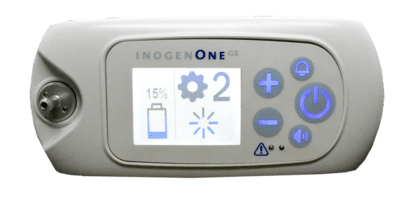
On a flow setting of 2, the Inogen One G5 is only 37 dBA (decibels). This is comparable to a quiet conversation or a gentle stream meaning it won’t be hugely disruptive in your daily life. You’ll be able to go out to a movie, church service, or library without worrying about people getting annoyed by the sound, and if your treatment plan allows it, you can even drop down to a flow setting of 1 if you want it to be extra quiet.
Inogen One G5 Specs
| Weight |
4.7 Pounds |
| Dimensions |
8.15" H x 7.19" L x 3.26" W |
| Flow Settings |
Pulse Settings 1-6 |
| Sound Level |
37 dBA @ Setting 2 |
| Expected Battery Life |
Up to 13 Hours |
Inogen One G5 Battery Life
| Flow Setting | Single Battery | Double Battery |
| 1 | 6 1/2 hours | 13 hours |
| 2 | 5 hours | 10 hours |
| 3 | 3 1/2 hours | 7 hours |
| 4 | 2 1/2 hours | 5 hours |
| 5 | 1 hr 51 mins | 3 hr 48 mins |
| 6 | 1 hr 26 mins | 2 hr 58 mins |
Inogen One G5 Oxygen Output
| Flow Setting | Oxygen Output (milliliters per minute) |
| 1 | 210 ml/min |
| 2 | 420 ml/min |
| 3 | 630 ml/min |
| 4 | 840 ml/min |
| 5 | 1050 ml/min |
| 6 | 1260 ml/min |
2.) The GCE Zen-O Lite (37 decibels)
GCE is a world-leader in medical oxygen device manufacturing. They have production facilities in China, the United Kingdom, the Czech Republic, and more. GCE Medical is a subsidiary of Gas Control Equipment Ltd, Europe’s leading gas equipment company. GCE is mainly known for its Zen-O continuous flow portable oxygen concentrator and its Zen-O Lite pulse dose portable oxygen concentrator, but they also offer two stationary oxygen concentrators: the M50 and OC-E80.
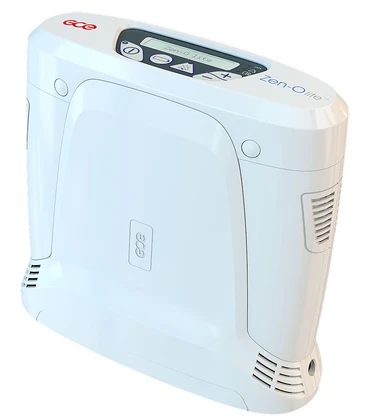
Much like the Inogen One G5, the GCE Zen-O Lite is perfect for those who want to live life without limits. Weighing in at only 5.5 pounds, you’ll be able to sling it over your shoulder without it causing pain or soreness. While this unit offers significantly less battery life than the G5, you’ll still have up to 8 hours of freedom on one battery charge if you’re on a setting of 2.
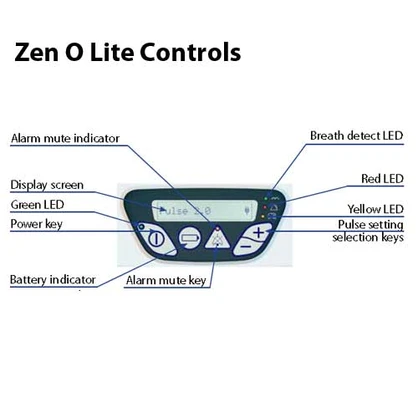
The sound output of the GCE Zen-O Lite is the same as the G5 at 37 dBA, so you will have no problems going to public areas and enjoying your day without worrying about the sound of your portable oxygen concentrator. The Zen-O Lite is also a great nighttime concentrator. If you need oxygen while you sleep, you can keep this concentrator next to your bed without disturbing your sleep.
GCE Zen-O Lite Specs
|
Weight |
5.5 Pounds |
|
Dimensions |
9.25” H x 9.8” W x 3.8” D |
|
Flow Rate |
Pulse Flow Settings 0.5-5 |
|
Battery Life |
4 Hours on Pulse 2 |
|
Power |
100-240 VAC, 50/60 Hz; 24 VDC |
|
FAA Approved |
Yes |
|
Warranty |
3-5 Years |
GCE Zen-O Lite Oxygen Output
| Flow Setting | Oxygen Output (milliliters per minute) |
| 1 | 220 ml/min |
| 2 | 440 ml/min |
| 3 | 660 ml/min |
| 4 | 880 ml/min |
| 5 | 1050 ml/min |
GCE Zen-O Lite Battery Life
|
Flow Rate |
Expected Battery Life |
|
1 |
Up to 4.0 Hours |
|
2 |
Up to 4.0 Hours |
|
3 |
Up to 3.0 Hours |
|
4 |
Up to 2.25 Hours |
|
5 |
Up to 2.0 Hours |
{{cta('b59df0c1-c4de-47a8-8e1c-0d33d4b414aa','justifycenter')}}
3.) The Inogen One G3 (39 decibels)
Despite being released in 2012, the Inogen One G3 is still a popular choice for oxygen patients who want a lightweight, reliable, and quiet portable oxygen concentrator. While the G3 is 2 dBA louder than the Inogen One G5 and the GCE Zen-O Lite, this difference is negligible and you likely wouldn’t even notice if you put it side-by-side with the other two devices.
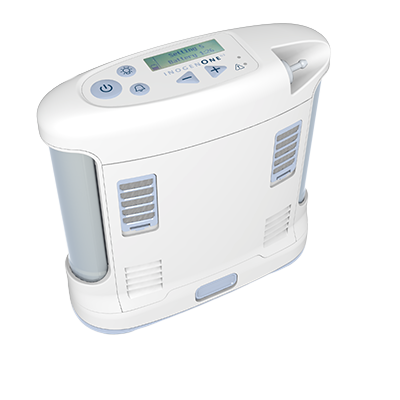
The G3 is not too far behind the G5 as far as other specs are concerned. It weighs in at just 4.8 pounds with flow settings 1 through 5, and it has an expected battery life of 8 hours on a flow setting of 2. Since the G3 is a little bit older than the G5, you might find that it’s a little bit easier to get a good deal on it.
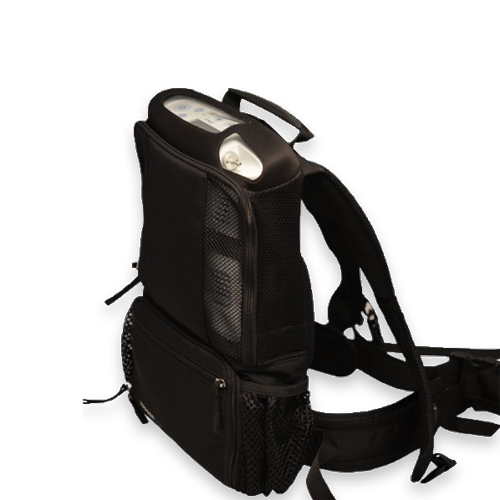
One of the biggest selling points of the G3 is its accessories. There are a wide range of carrying options for the G3 including the custom carrying case, G3 backpack, G3 rolling backpack, and GO2 Carryall, a stylish handbag that can match with just about any outfit. No matter what way you look at it, the G3 offers a lot more options for customization than other portable oxygen concentrators out there.
Inogen One G3 Specs
|
Weight |
8-Cell: 4.8 Pounds; 16-Cell: 5.8 Pounds |
|
Dimensions |
7.25” Wide x 3” Deep x 8.75” High |
|
Flow Rate |
Pulse Flow Settings 1-5 |
|
Battery Life |
8-Cell: Up to 4 Hours; 16-Cell: Up to 8.5 Hours |
|
Power |
100-240 VAC, 50/60 Hz; 11-16 VDC |
|
FAA Approved |
Yes |
|
Warranty |
3 Years |
Inogen One G3 Battery Life
| Flow Rate | 8-Cell Battery | 16-Cell Battery |
| 1 | Up to 4.5 Hours | Up to 9.5 Hours |
| 2 | Up to 4.0 Hours | Up to 8.5 Hours |
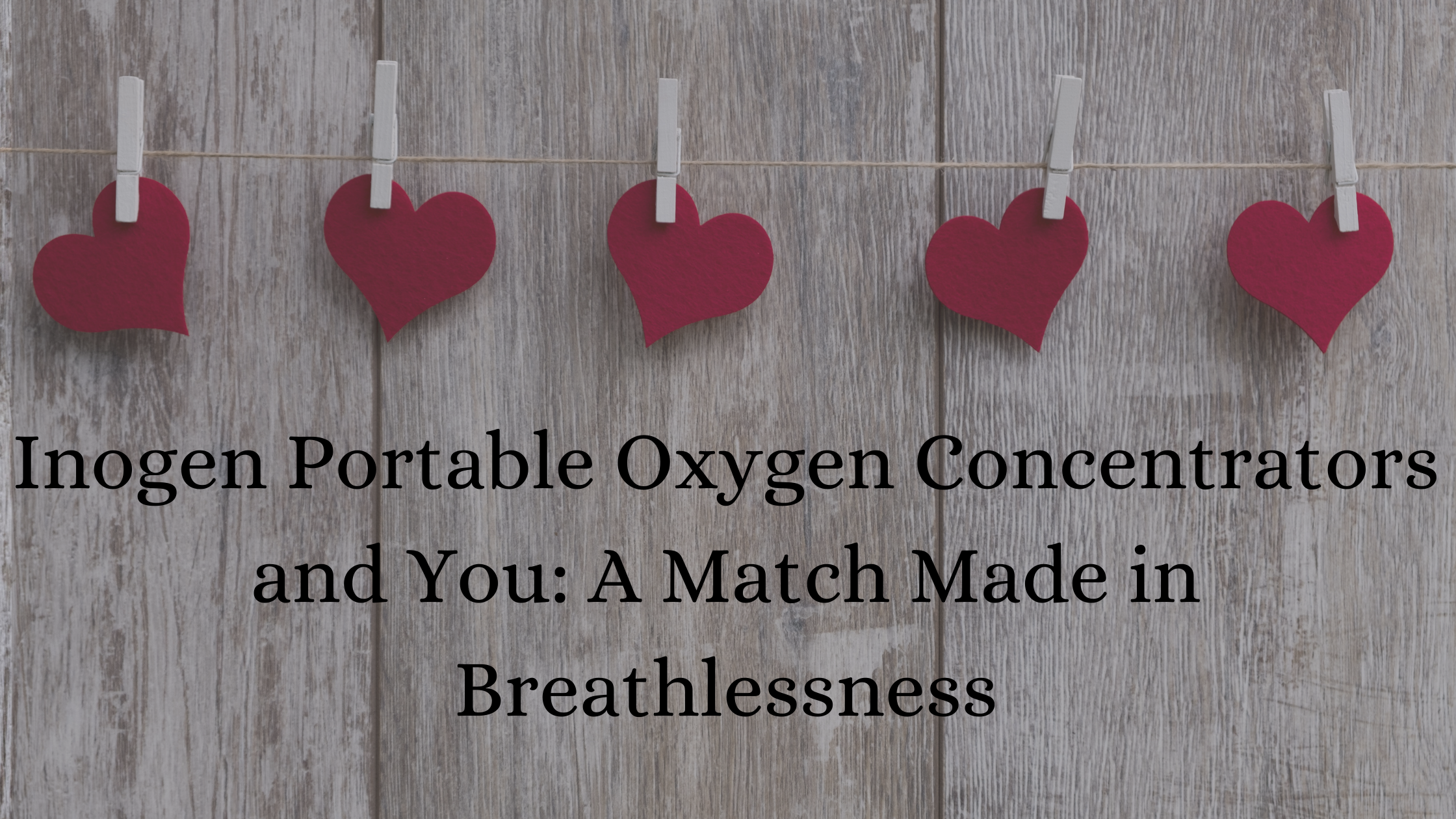
Similarly to a love match made in heaven, your oxygen therapy device should meet the same set of standard and be created to last a lifetime!
Your oxygen device, like a loved one, should make life better and more enjoyable. They should both possess qualities that bring out the best in yourself! Each should be reliable at all times of the day and night, and in times of hardship. In this article we will talk about our Inogen brand portable oxygen concentrators and how the right POC will make a perfect match for you and your lifestyle
If your oxygen device is not meeting your standards, you should consider a new journey with a new device that will open up new and exciting possibilities, give you freedom, and most importantly the reliability to breath everyday all day no matter what.
Finding the right oxygen device for you may seem like a daunting and overwhelming task, after all, there are so many brands, different machinery, massive lists of pros and cons, how do you know your oxygen device will meet your requirements?
Well in this article we are focusing on one brand, Inogen, and we will look at three different portable oxygen concentrators. Inogen is a company at the very top of the oxygen industry. They started off with one of the first FAA-approved portable oxygen concentrators and since then they have never looked back.
Meet the 3 eligible Inogen portable oxygen concentrators
{{cta('43b79c5e-6bd6-4f02-ac27-2d038d20c146','justifycenter')}}
Inogen Review
One thing that you should know is that even though you need oxygen therapy you actually do not have to sacrifice your personal freedom to hang out with your friends or visit with family due to the restrictive nature of your medical oxygen tanks.
There are cheaper and more efficient alternatives: Portable oxygen concentrators in general, and more specifically, the Inogen brand portable oxygen concentrators offer oxygen users a reliable and comfortable oxygen experience that makes life easier and more enjoyable.
The Inogen One G5
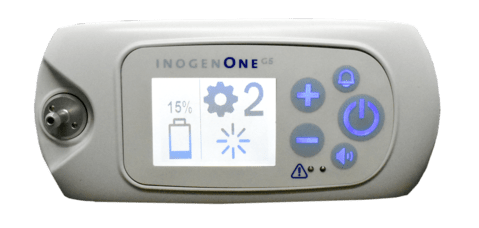
Ditch that cumbersome oxygen tank, and simultaneously regain your personal freedom with the brand new Inogen One G5 portable oxygen concentrator.
Instead of worrying about refilling your oxygen tanks, the Inogen One G5 restores your mobility thanks to its portable delivery of pulse flow settings of 1-6, which is powered by a rechargeable lithium-ion battery. This battery can last up to 13 hours, depending on your pulse dose prescription. You will be able to stay out longer without having to charge your device.
The One G5 portable oxygen concentrator is lighter and offers a longer battery life than the One G3.
Like we mentioned earlier, you should be able to rely on your oxygen device any time during the day or night, and with the One G5, you will be able to enjoy these same oxygen delivery benefits at night while you sleep thanks to the presence of Inogen’s intelligent Sleep Mode Technology.
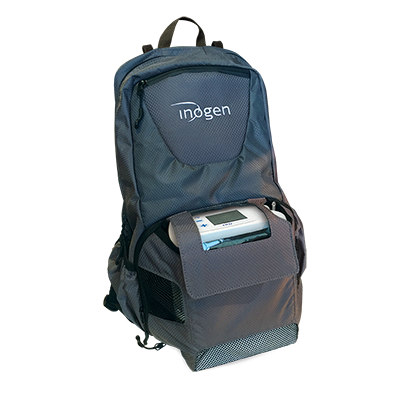
Essentially what this means is that as your breathing rate becomes more shallow as you sleep, the Sleep Mode Technology will go to work by increasing each bolus dose of oxygen.
Even if you are a mouth breather, the Sleep Mode Technology is able to detect shallow mouth breaths that are frequent when sleeping. This will then tell the Inogen One G5 to trigger a bolus dose based upon your specific fixed minute volume.
Now, most of our customers are able to use this technology to sleep with the Inogen One G5, however, we highly recommend you first speak with your doctor before using this while sleeping.
The One G5 will most likely satisfy any oxygen patient's needs who requires a pulse dose oxygen device because the Inogen One G5 portable oxygen concentrator offers pulse flow settings of 1-6! This means that even if you only require a pulse dose setting of 2-3, in the case of an emergency like a flare up, your doctor may recommend that you increase the oxygen flow in order to calm the systems you are experiencing during a flare. In this case, the One G5 is powerful enough to meet you required pulse dose settings should you need to increase it.
{{cta('b59df0c1-c4de-47a8-8e1c-0d33d4b414aa','justifycenter')}}
Learning about your oxygen device is hugely important if you want to reap all of the benefits that comes with it. Educating yourself about all of your medical devices should be one of your top priorities to ensure you are able to manage and treat your disease effectively. In an effort to help our patients with all aspects of their pulmonary wellness regimen, we’re now offering a FREE Thrive eLearning Course with the purchase of your Inogen One G5 portable oxygen concentrator.
This pulmonary wellness guide teaches you about more than just your great portable oxygen concentrator. It shows you how to make other lifestyle changes involving your diet, exercise routine, and more.
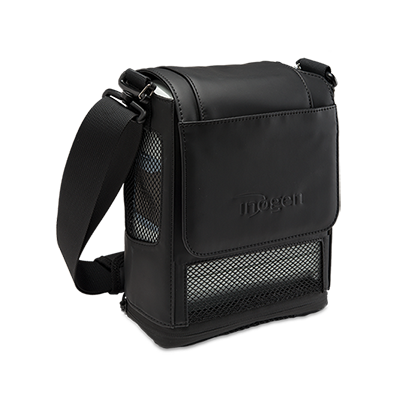
Thrive is an accessible, all-in-one online training course that aims to provide you with simple, practical, and actionable tips for managing chronic obstructive pulmonary disease (COPD). With this program, you’ll also have access to one-on-one counseling with certified pulmonary experts, support group opportunities, online learning courses, and much more! Below is a full list of what
you’ll receive:
- Direct access to a private support group (patients, caretakers, and experts)
- Years of COPD and respiratory illness knowledge
- Step-by-step disease management regimen
- Best selling e-books and guides
- Step-by-step breathing exercises
- Learn about exacerbations and how to prevent them
- Speak with a nutritionist about refining and improving your diet
COPD symptoms can only be managed with impeccable lifestyle choices. This ePulmonary Advanced Online Workshop will help you get back on track and locate any anomalies in your COPD treatment plan. The Inogen One G5 will provide you with the oxygen and freedom that you need to live life on your own terms, but this training program will make you unstoppable!
This Thrive ePulmonary Online Training Program is a $497 value, but we’re offering it for FREE! Order your Inogen One G5 today and experience the freedom you want and deserve!

So let's recap the One G5:
The advantages of the Inogen One G5:
- Weighs Less Than the Inogen One G3
- Improved Battery Life Compared to the G3 for Extended Mobility
- Enjoy Interruption Free Oxygen Therapy
- Sleep Mode Technology for a Delivery of Oxygen Therapy While You Sleep
- Reliable in the case of an emergency
Inogen One G3
The Inogen One G3 offers incredible battery life in combination with a compact and lightweight design. So even though this model is earlier than the One G4 and G5, it is still one of the most popular portable oxygen concentrators on the market for over two years

The One G3 weighs 4.8 pounds and offers up to 8 hours of battery life. So the G3 is easy to carry wherever you go all day long.
Whether you’re going on vacation, heading to the doctor, exercising, or lounging around your house you will be able to comfortably carry your Inogen One G3 with you. And if your lifestyle calls for longer battery life, even with the 16-Cell battery, the G3 still weighs less than 6 pounds!
One of the other major reasons why the Inogen One G3 is one of the most popular units on the market is the fact that it is one of the most durable and reliable concentrators available. This is an essential quality that you should look for in a portable oxygen concentrator A lot of respiratory diseases are progressive in nature. So if you require a setting of 2 or 3, the Inogen One G3 provides you with some wiggle room for an increase in your flow rate past these settings. So if your disease progresses and you prescribed flow rate increases you won’t have to worry about getting a new oxygen concentrator.
The Inogen One G3 is a pulse flow portable oxygen concentrator. It does not have the ability to provide a continuous flow. It offers pulse flow settings 1-5 and can accommodate nearly any oxygen patient who can use a pulse flow.
Despite the fact that the Inogen One G3 is a pulse flow portable oxygen concentrator, the majority of oxygen patients can still use this machine for nighttime oxygen delivery! Just like the Inogen One G2, the G3 is equipped with Intelligent Delivery Technology.

Inogen’s Intelligent Delivery Technology ensures that your oxygen is delivered within the first 400 milliseconds after your concentrator detects your breath. This almost guarantees that you’re receiving the entire bolus dose of oxygen delivered by your G3.
Along with delivering oxygen within the first 400 milliseconds, the Intelligent Delivery Technology responds to your breath rate! This feature is what allows you to use your Inogen One G3 while you sleep even though it doesn’t offer a continuous flow.
When you are sleeping your breathing rate decreases. As the Intelligent Delivery Technology monitors your breath rate, it will automatically increase or decrease the amount of oxygen per bolus dose depending on the oxygen setting and your breath rate.
For example, if you are breathing at a rate of 10 breaths per minute the Inogen One G3 will double the amount of oxygen per bolus dose than if you were breathing at 20 breaths per minute. This is to ensure you are getting your required oxygen.
One of the big reasons pulse flow portable oxygen concentrators aren’t recommended to use at night while you sleep is that they don’t detect mouth breaths. The Inogen One G3, on the other hand, will be able to detect shallow mouth breaths! So as long as you don’t need a CPAP or BiPAP machine at night, the Inogen One G3 should work for your nighttime oxygen delivery system.
Using the Inogen One G3 is simple and straightforward. The control panel is equipped with an easy to read LCD screen and large push buttons.
The LCD screen shows you vital information like the flow rate you have the machine set to and your remaining battery life. If you are having a hard time reading the screen you have the option of turning the LCD screen backlight on or off.

There are a total of 5 buttons and each push button is labeled with its specific function:
1. Power Button (standard power symbol)
2. Display Backlight Button (lightbulb)
3. Audible Alarm Button (bell)
4. Flow Rate Up Button (plus sign)
5. Flow Rate Down Button (minus sign)
One of the most important features you should look for in a portable oxygen concentrator is the battery life. And it’s easy to understand why… More battery life equals more freedom and independence.
With the Inogen One G3, you have 2 different battery options to choose from:
8-Cell Battery
16-Cell Battery
The 8-Cell battery keeps your Inogen One G3 at 4.8 pounds and supplies you with up to 4 hours of battery life. It’s perfect for quick errands, doing things around your house, gardening, or exercising.
The 16-Cell battery adds about a pound of weight to your Inogen One G3, but it supplies you with double the battery life. When you think about it, adding an extra pound of weight to get up to 4.5 additional hours of battery life is a pretty good deal!
The 16-Cell battery is ideal for things like traveling, long trips away from your house, and using as a backup power source in case of a power outage.
The Inogen One G4
Weighing in at 2.8 pounds… Yes, you read that right! At 2.8 the Inogen One G4 is the smallest and lightest portable oxygen concentrator to offer pulse flow settings 1-3 and its battery life is surprising for how small this machine is.
The Inogen One G4 offers 2 different battery options:
Single Battery
Double Battery

With the single battery, you can get up to 2.25 hours of use on a single charge on a setting of 2 and your Inogen One G4 will weigh just 2.8 pounds. This setup is perfect for making trips to the doctor’s office, running to the store, doing things around your house, and exercising.
The double battery, on the other hand, gets up to 4.5 hours of use on a single charge. Despite doubling your battery life your Inogen One G4 will weigh a mere 3.3 pounds with the double battery installed. This setup will give you the freedom and independence to travel, go to sporting events, or get dinner and see a movie.
Being less restrictive with its oxygen settings and by giving you up to 5 hours of battery life, the Inogen One G4 set the bar high for competitors to follow.

Recharging your Inogen One G4 batteries is fast and convenient. You have a total of three different charging options to choose from:
AC Power Supply
DC Power Supply
External Battery Charger
The AC power supply is the most common charging option. It charges your batteries faster than the DC power supply and you can use your Inogen One G4 on all 3 oxygen settings while you recharge. The AC power supply is equipped with a 110v power cord allowing you to plug it into any wall outlet. You can use it at home, in your hotel room, on a cruise ship and even some of the newer airplanes have 110v outlets at every seat.

While your Inogen One G4 is plugged into the AC power supply you will have an unlimited amount of oxygen. So, make sure you plug your G4 into the AC power supply if you plan on using it to sleep.
The DC power supply gives you the ability to power your concentrator and recharge your batteries on the go! It is equipped with a 12v power cord so you can plug it into the cigarette lighter or 12v outlet in your vehicle. You can take it in your car, truck, RV, or on your boat!
While your Inogen One G4 is plugged into the DC power supply it will recharge and supply you with oxygen on all 3 settings. However, if you are using your G4 while it is plugged into the DC power supply it will take longer to recharge. Remember to turn your vehicle on before plugging your G4 into the DC power supply otherwise, you might blow a fuse or drain your vehicle’s battery.
Although the external battery charger is an optional accessory, it is the most convenient charging option available for your Inogen One G4. It’s a single bay charger that gives you the ability to recharge your extra batteries without plugging your concentrator into a power supply.
{{cta('fa8abc2a-1e88-4fa3-82fd-1cb5b9ed43b2','justifycenter')}}
This means you can run errands, exercise, or go visit your friends and come home to a fully charged battery waiting for you!
Because of its small size, the Inogen One G4 is perfect for any occasion. Its compressor is rated to last 20,000 hours so you can have peace of mind using it every day. It’s small enough to carry virtually anywhere without feeling like your arm is going to fall off. And traveling with oxygen has never been easier than it is with the G4.
Inogen Price
Inogen portable oxygen concentrators range in prices, and when you purchase your inogen system from LPTMedical.com you are getting the best possible price. Inogen cost comparisons can be broken down in detail by our experienced respiratory specialists by calling 1(800)-946-1201 or by emailing info@lptmedical.com
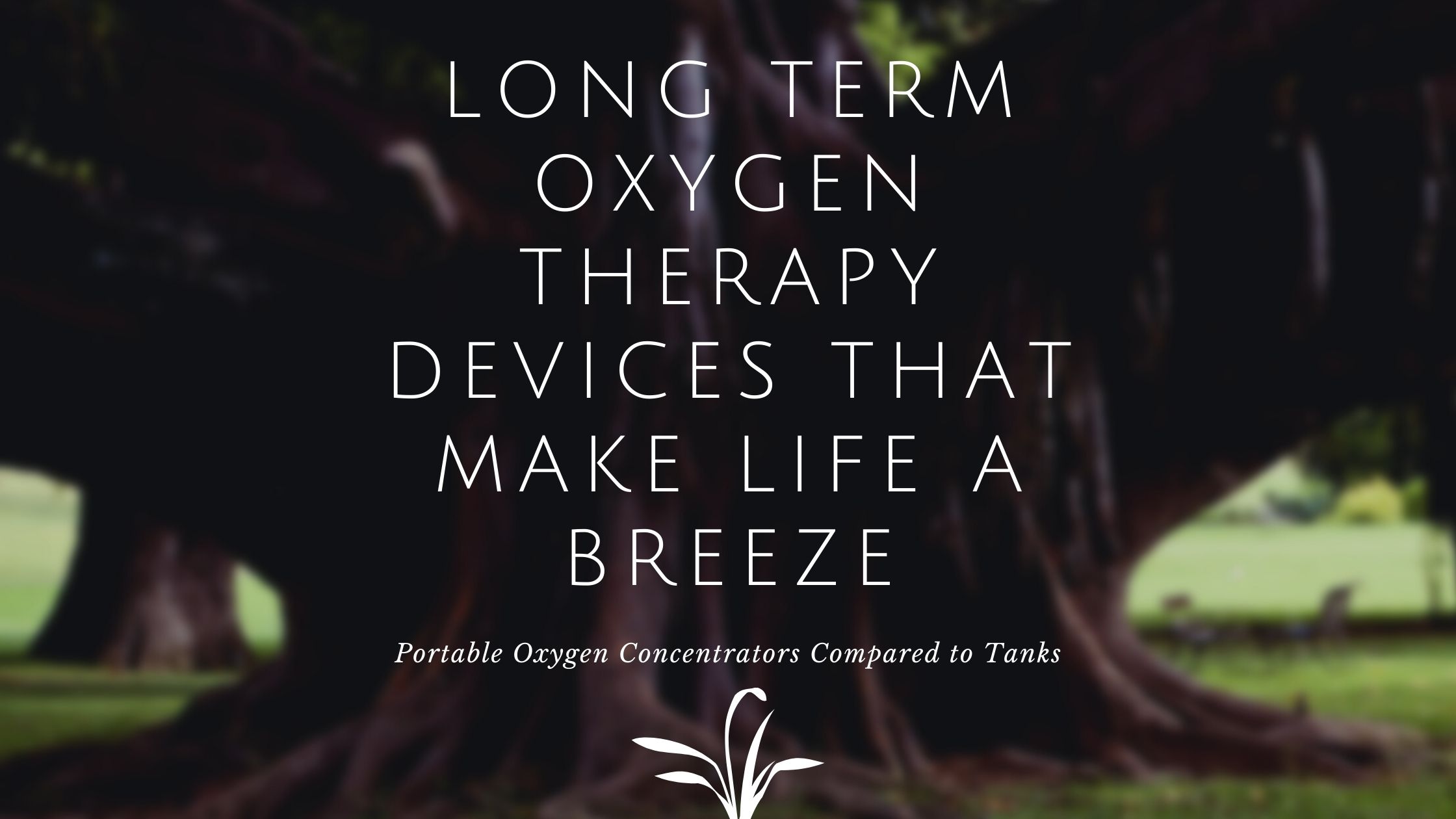
If you have a condition such as chronic obstructive respiratory disease or pulmonary fibrosis, it is possible that you will eventually require supplemental oxygen therapy as a main treatment method if you do not already.
The nature of these respiratory diseases is that the conditions tend to get worse overtime due to environmental stress and your body’s natural aging process. Among the 16.4 million people who have reported that they have been diagnosed with COPD, approximately 800,000 for those people also receive long-term oxygen therapy (LTOT).
{{cta('fa8abc2a-1e88-4fa3-82fd-1cb5b9ed43b2','justifycenter')}}
Long term oxygen therapy is an essential part of many people’s daily lives, and if you are one of the 800,000 people utilizing oxygen therapy everyday, it is important to understand all of your options when it comes to oxygen devices. Having the best device for your lifestyle will help you reach your goals so you can live a long and happy life.
In this blog we want to explain to you all of the ways portable oxygen concentrators differ from traditional oxygen therapy methods like liquid and gas tanks. This will show you how important it is for your wellbeing to own an oxygen device that motivates you to do better rather than just helping you get by.
Long Term Oxygen Therapy Benefits
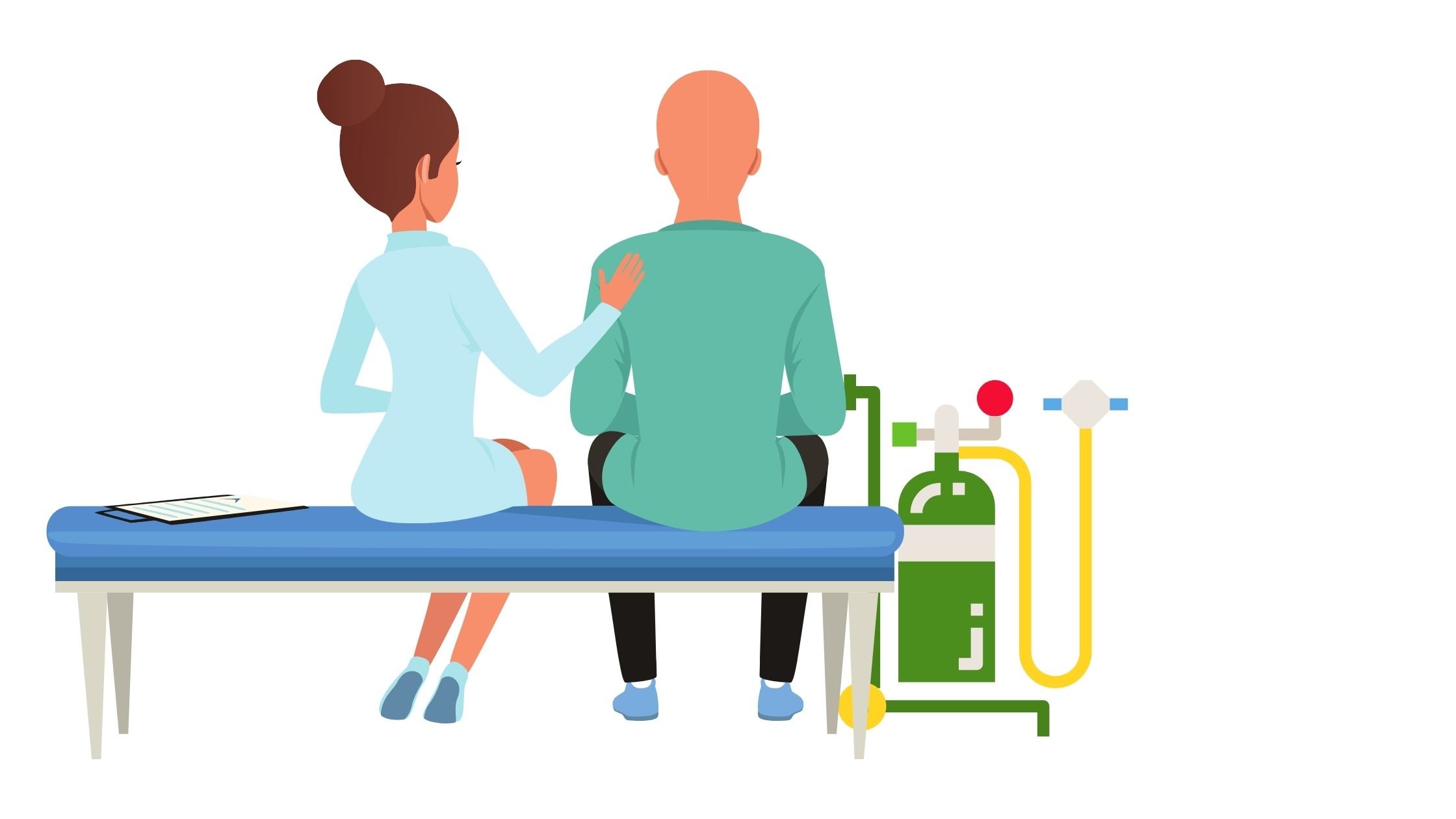
No matter what type of oxygen device you own it is important to first acknowledge the benefits of long-term oxygen therapy (LTOT). LTOT has been widely acknowledged by medical professionals and respiratory specialists as a tool or treatment to increase the life expectancy in patients with severe hypoxemia.
Out of all of the treatments necessary for managing and living with respiratory conditions such as COPD, oxygen therapy is one of the treatments that can actually add years to a respiratory patient’s life. Of course taking medication, eating a healthy diet, and taking pulmonary rehabilitation courses are all great steps towards living a healthy life with a chronic respiratory disease, but LTOT is the most important on par with quitting smoking.
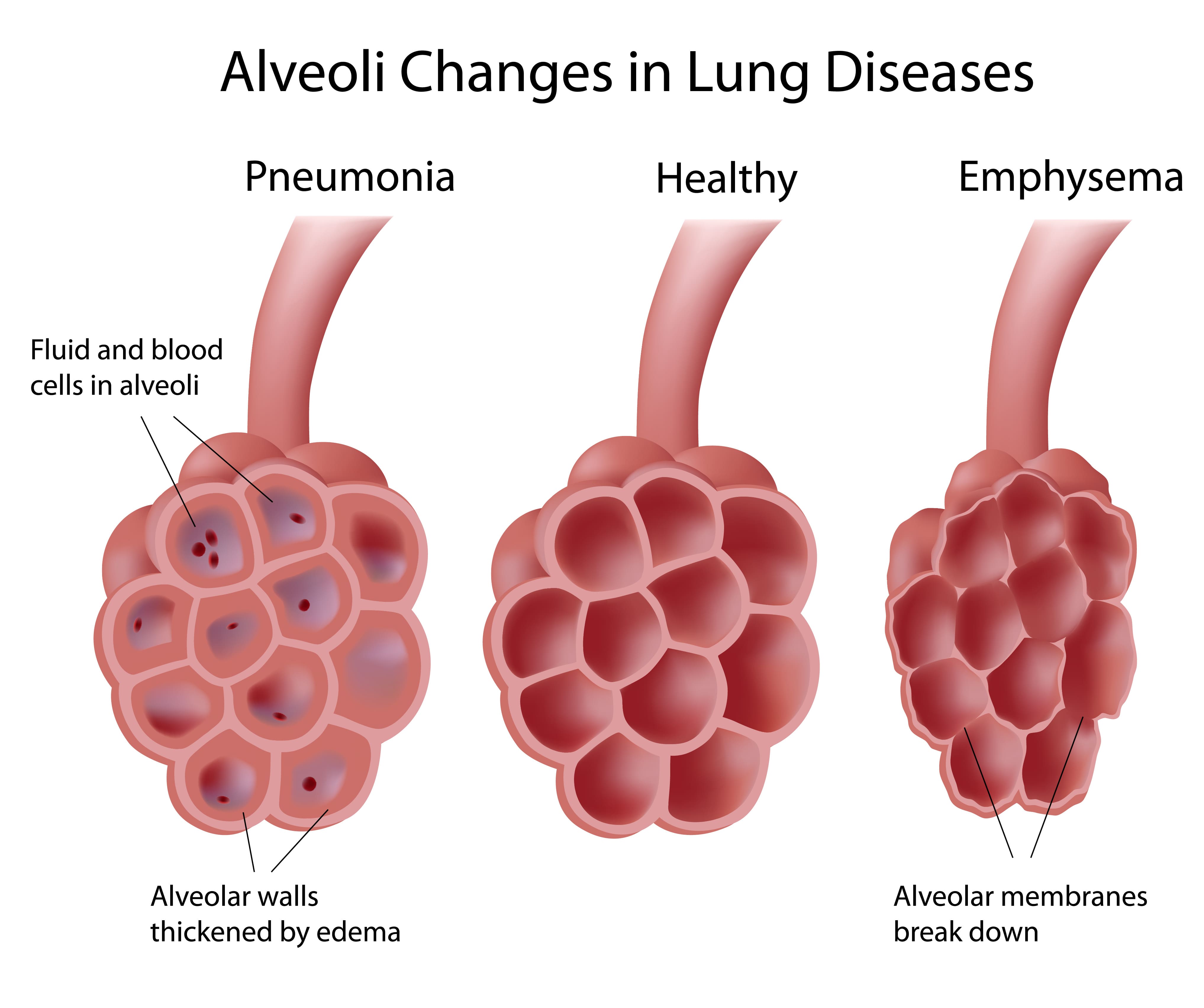
If you have COPD and severe resting hypoxemia where your oxygen saturation levels are less than 88% you should be prescribed LTOT for at least 15 hours daily, and your doctor will need to prescribe you oxygen at a specified flow rate.
Your flow rate will correspond to the severity of your condition in certain situations, for example while you rest or exercise, and you will need to adhere to the oxygen prescription that your doctor wrote in order to take full advantage of your oxygen therapy.
These benefits include:
- Reduced shortness of breath
- Increased energy
- Helps improve quality of sleep
- Helps to improve exercise tolerance
- Fewer complications and hospitalizations
- Increases survival
- Ability to travel by air with a portable oxygen concentrator
Owning a Portable Oxygen Concentrator

On the surface, LTOT offers respiratory patients a number of health benefits, but owning a portable oxygen concentrator (POC) gives oxygen patients benefits on a much deeper and a much more human level. Rather than just giving you the oxygen you need to survive, a POC is a tool that gives oxygen patients the ability and confidence to reach their goals, whether that is to start walking more or traveling to see their family and everything in between.
Ability to Exercise
POCs like the Caire Freestyle Comfort and Inogen oxygen concentrators are very lightweight yet very powerful pulse flow portable oxygen concentrators. Because these devices are lightweight, it makes it easy for you to bring with you on walks, bike, ride, or to your pulmonary rehabilitation classes.

These devices also have great battery life, meaning you can stay out longer and exercise with your device without anxiety that you will run low on oxygen. The Freestyle Comfort and the Inogen one series all have the option to upgrade to a larger battery, one that lasts longer even if you have to increase your oxygen output while you are exercising.
Exercise is critical, even if it is just a walk a day, as a respiratory patient you are benefited greatly from improving your physical strength and your endurance. That being said, physical activity does not always come naturally, and finding the motivation can be difficult.
Having the right oxygen equipment that will help you to reach your goals makes it easier to find motivation to get up and do a little bit of exercise everyday. Rather than lugging around a heavy oxygen tank, a lightweight portable oxygen concentrator is the perfect accessory for the gym or a walk around the park!

Ability to Travel on an Airplane
Liquid and gas oxygen tanks are never permitted on any airplane, not in your carry on or checked baggage. Clearly this is limiting oxygen patients everywhere from experiencing the joys of vacation or traveling for their business or career.

If you have a POC you will be able to travel again with ease and comfort. Even in 2021, during the global pandemic, air travel has more risks associated with the transmission of COVID-19, but as a oxygen patient with a portable oxygen concentrator you will be able to travel again once it is safe with ease.
Click here to read Everything you Need to Know About Traveling with Oxygen Equipment in 2021
Saving Money
.jpg)
Having a chronic illness is expensive, no matter what type of insurance you have, there are a lot of costs associated with hospital and doctor visits, medical equipment, medication, therapy, exercise classes, and so much more. These costs add up over time, and the recurring payments will break the bank overtime.
Click here to read How to Budget and Afford a Portable Oxygen Concentrator
One of the most important aspects of owning a portable oxygen concentrator besides the health benefits, are the financial savings. Many people shy away at the first sight of the upfront costs associated with POCs. For example Inogen costs much more than the initiative costs of the most basic oxygen tanks, however, overtime the costs of refilling your oxygen tanks and renting oxygen while you travel will greatly outweigh the upfront cost of a portable oxygen concentrator.
Every Time you have to get your tank refilled with oxygen, you have to spend valuable time and money. With a POC, all you have to do is remember to recharge the battery, and you will have oxygen everywhere you go for free!
With a POC you are never wasting oxygen, even if you forget to turn off your device when you aren't using it. There are plenty of times where your oxygen tank will continue to emit oxygen even when it doesn't need to, and every time this happens you are wasting money.
Peace of Mind You Will Never Run Low on Oxygen
Beyond the health benefits and the financial savings, you are also giving yourself peace of mind when you have your own portable oxygen concentrators.
Devices like the SeQual Eclipse 5 are known for their durability and reliability. The SeQual Eclipse 5 was actually designed for the U.S. military, and it is one of the most popular continuous flow oxygen devices today.
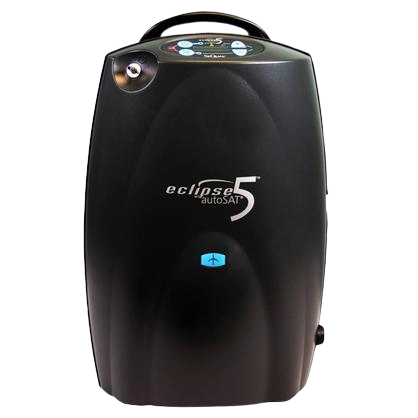
When you purchase a new POC from LPT Medical, you will get a 3 year warranty, and even if you decide to buy a used device, you will still get a warranty! The warranty protects you from spending too much money on the rare malfunctions and other issues that may arise. This peace of mind alone gives you the freedom to enjoy life to the fullest and take advantage of all of the benefits oxygen therapy can provide you
Battery Life that Lasts

Battery life is one of the most important aspects of owning a portable oxygen concentrator, it is essential that you are looking into the battery life of the device you are interested in before you buy one.
If you need a high oxygen output, understand that the battery life will be affected by this, and it is probably a good idea for you to purchase a bigger battery for your device. For example, inogen systems all come with an inogen 8-cell battery but for an additional yet reasonable cost you can get the bigger Inogen 16-cell battery that will last longer.
Having two batteries and an external battery charger is the best option for oxygen patients who travel a lot, or simply enjoy being on the go for long periods of time. With the external charger, you can charge one battery while using the other, and switching your batteries is very easy.
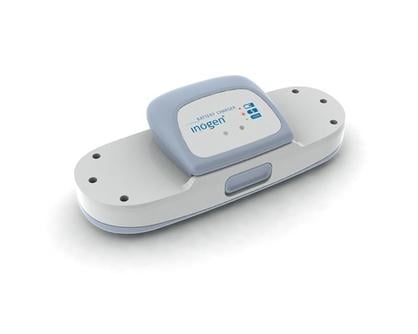
Talk with your respiratory specialist about the battery life of all of the devices you are interested in, and also ask them about buying a larger battery if you are interested in going longer periods of time with your oxygen device.
Getting a bigger battery is not essential, remember that you can use your oxygen device while you are charging it, so if you like to rest in the middle of the day, this is a perfect opportunity to plug on your POC. Also device like the Caire Freestyle Comfort come equipped with UltraSense Breath Detection Technology, which is a breath detection feature that makes this oxygen unit one of the most efficient and effective on the market. Rather than providing you with a constant stream of oxygen, the Freestyle Comfort delivers oxygen only when a breath is detected. This “bolus” of oxygen is precisely synced with your breathing ensuring no oxygen is wasted.
.jpg)
This technology is perfect for while you rest in the middle of the day, because your oxygen device will not keep you up or wake you from a nap, it simply give you the oxygen you need and nothing more.
Overview
{{cta('b59df0c1-c4de-47a8-8e1c-0d33d4b414aa','justifycenter')}}
The benefits of long term oxygen therapy are undeniable, and the lifestyle improvements you gain from owning a POC compared to alternative oxygen devices are also very evident.
If you are still curious about the differences between owning a POC compared to an oxygen tank please take the time to read some of the blogs on our respiratory resource page, or simply call 1(800)-946-1201 to speak with a respiratory specialist.


 So we can find the best portable oxygen concentrator for your needs!
So we can find the best portable oxygen concentrator for your needs!













